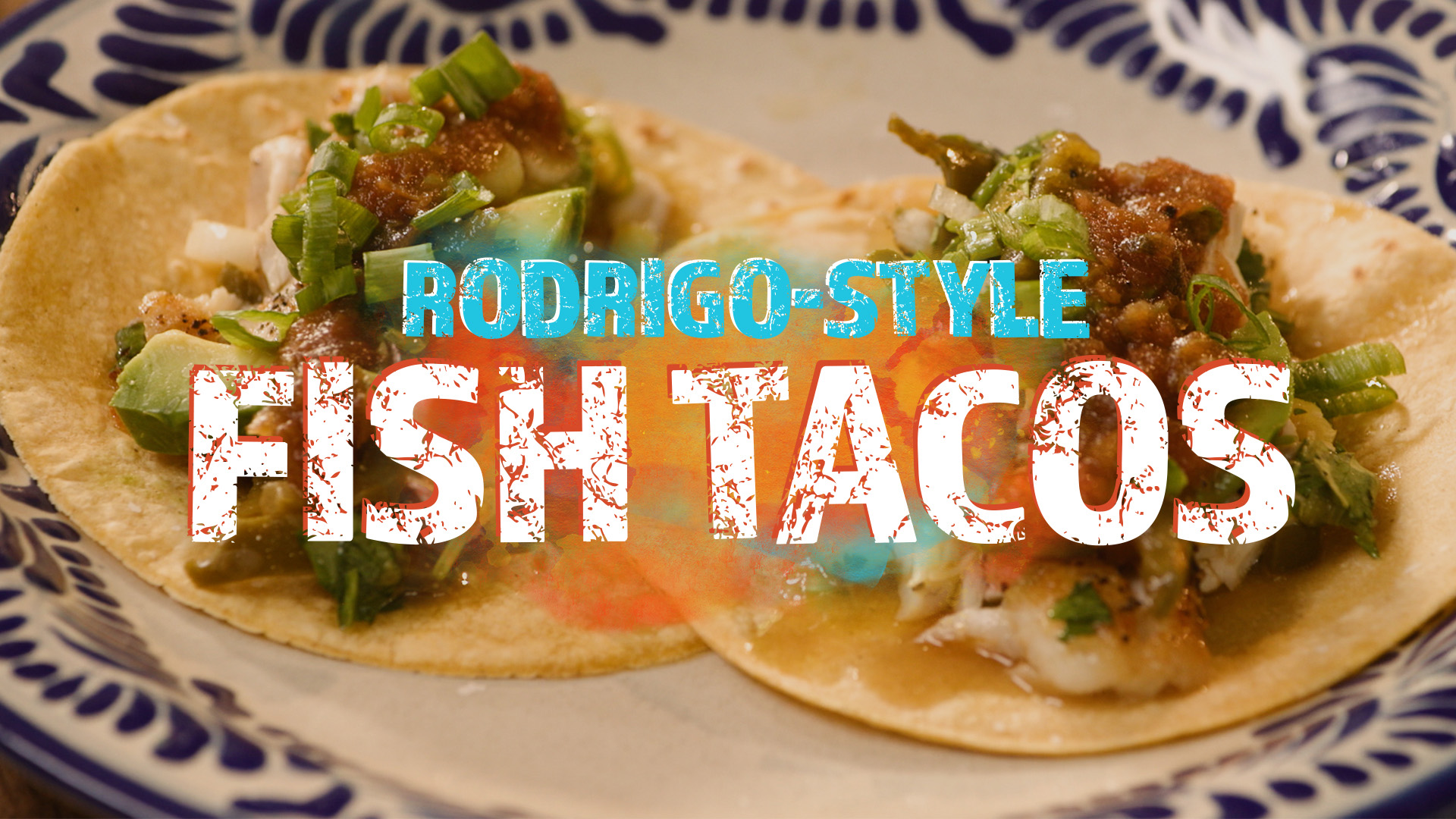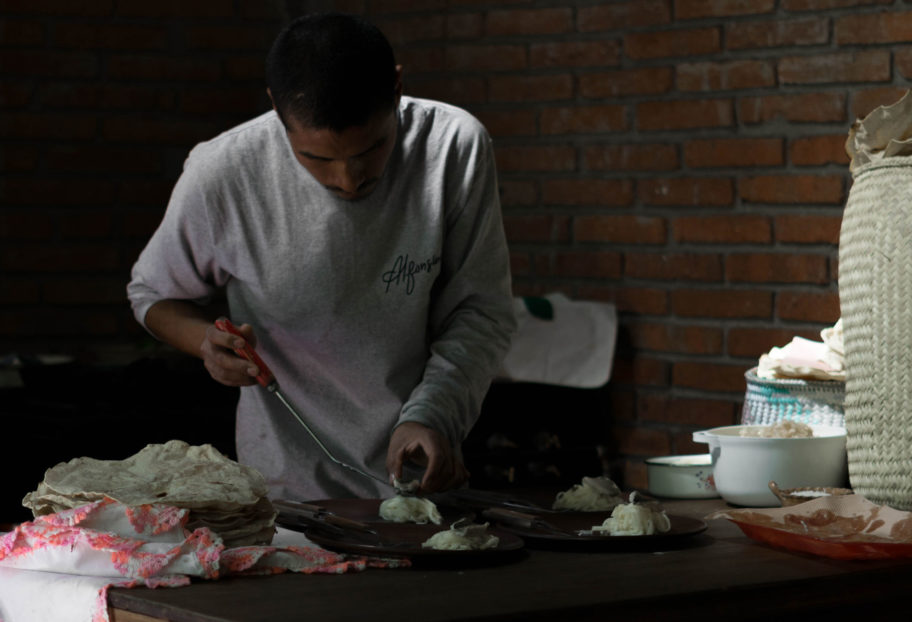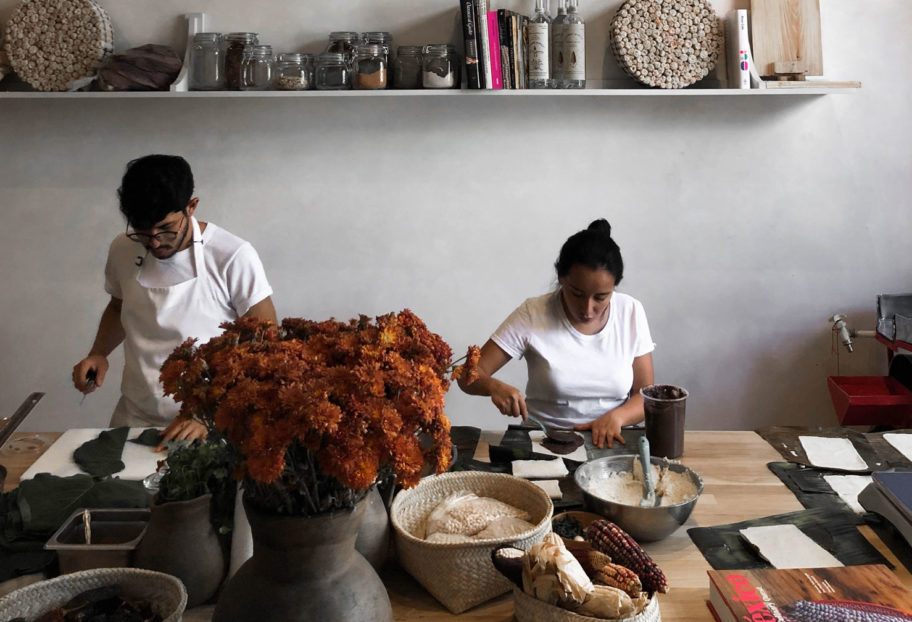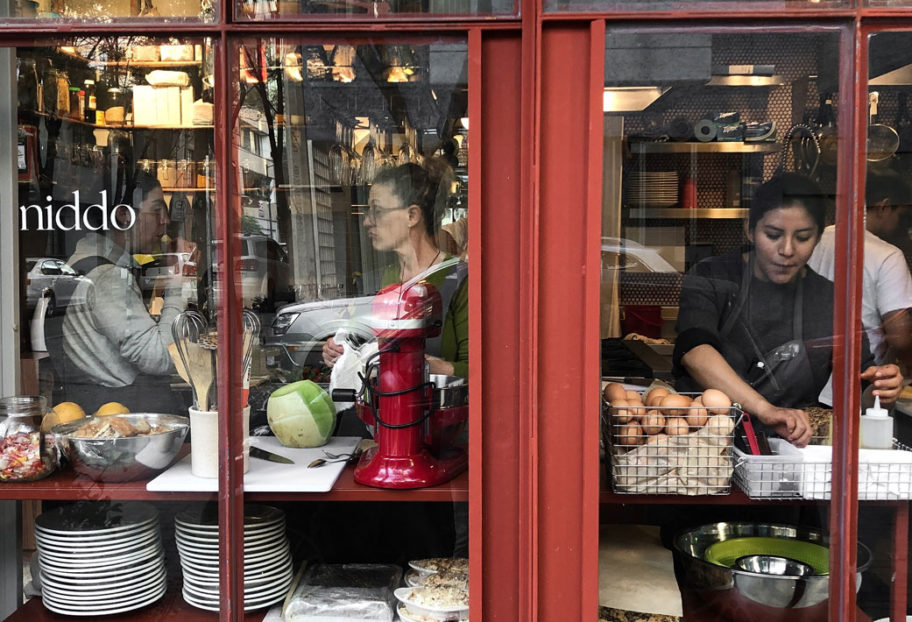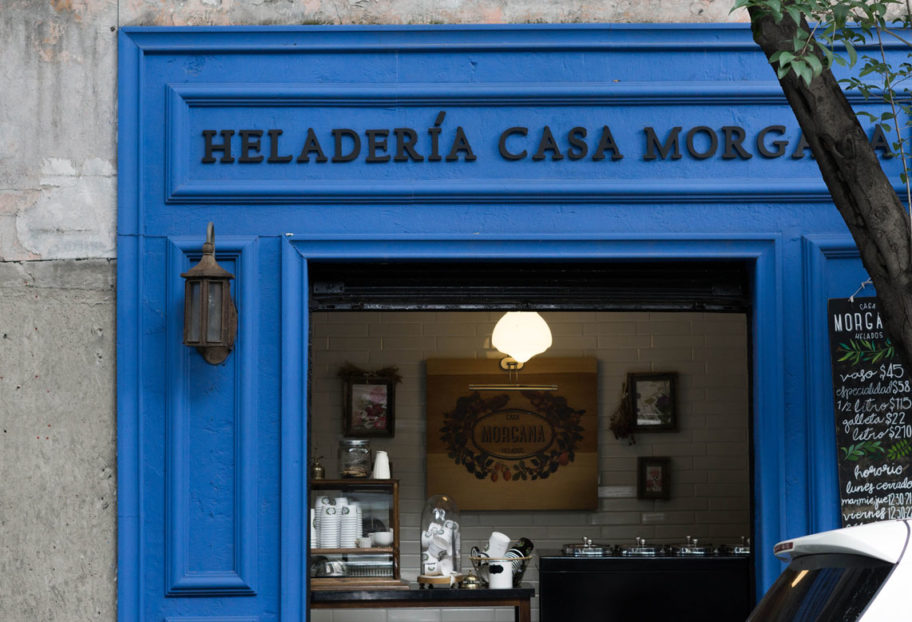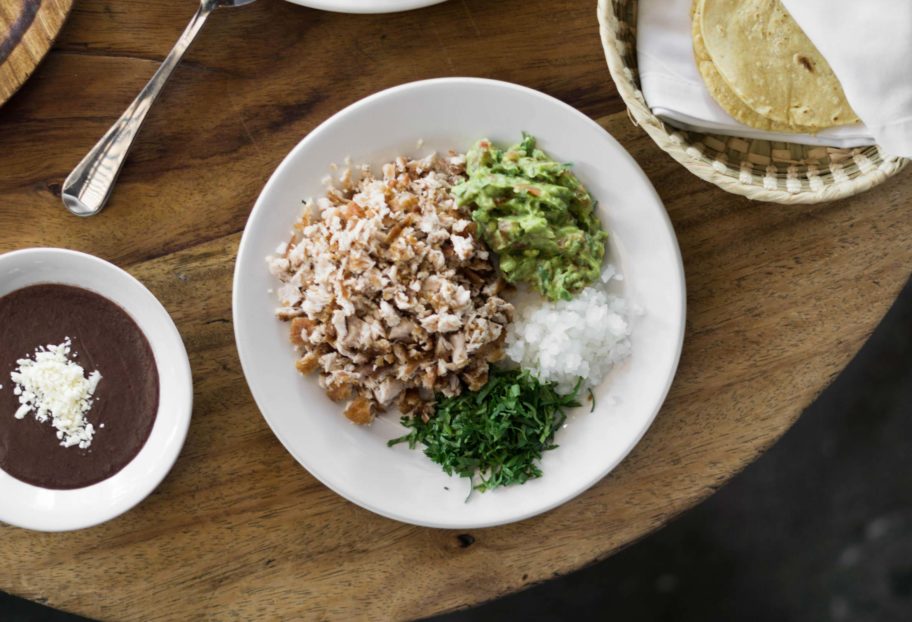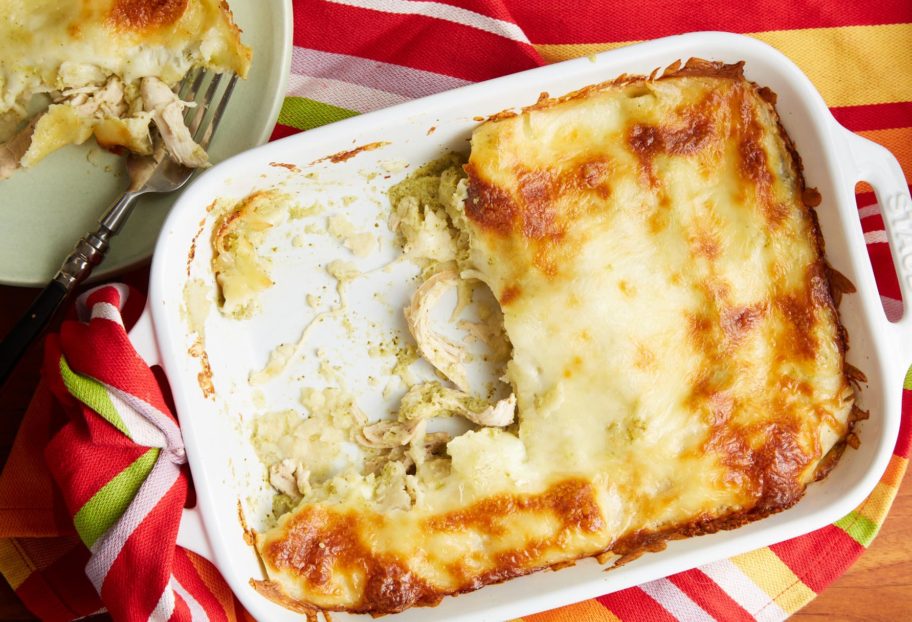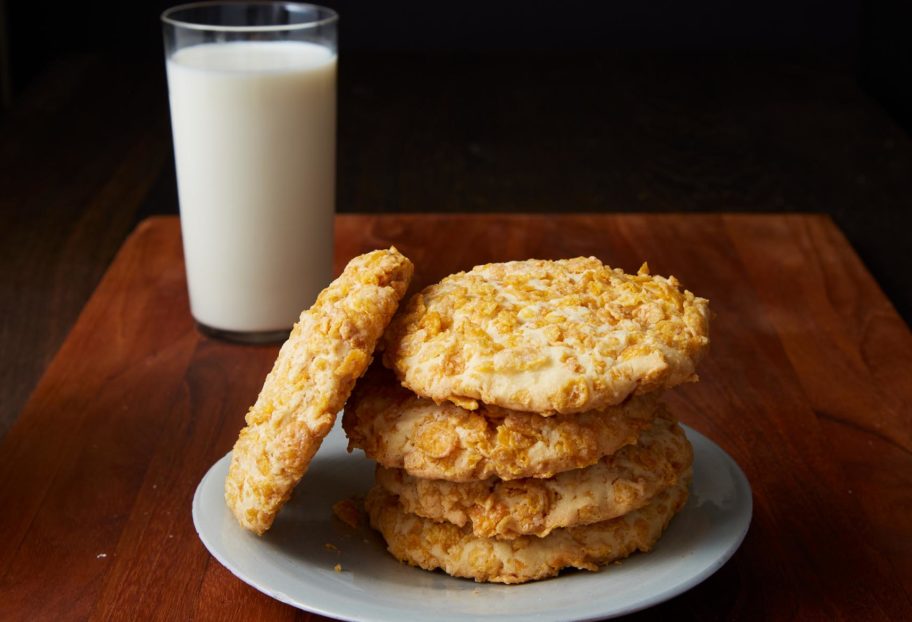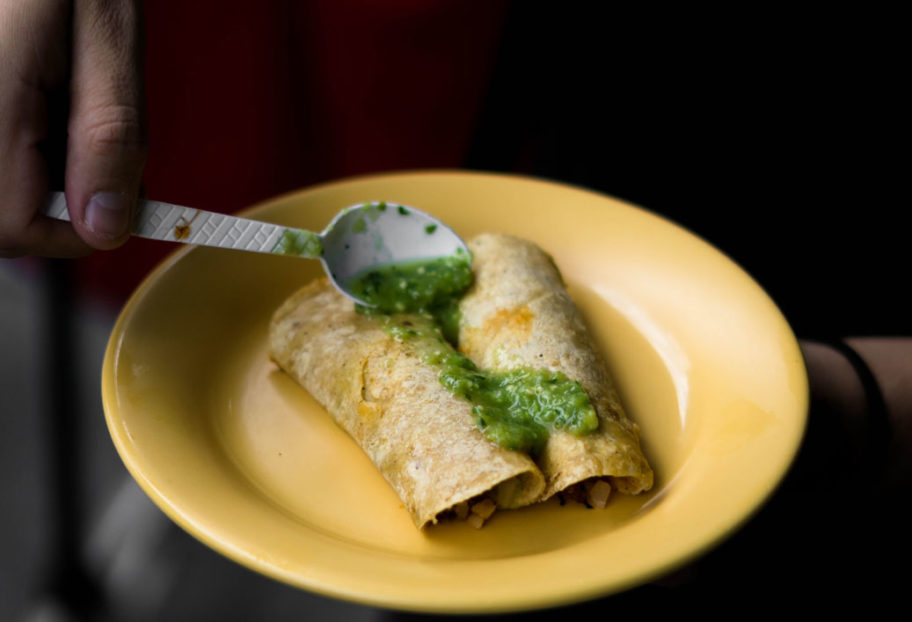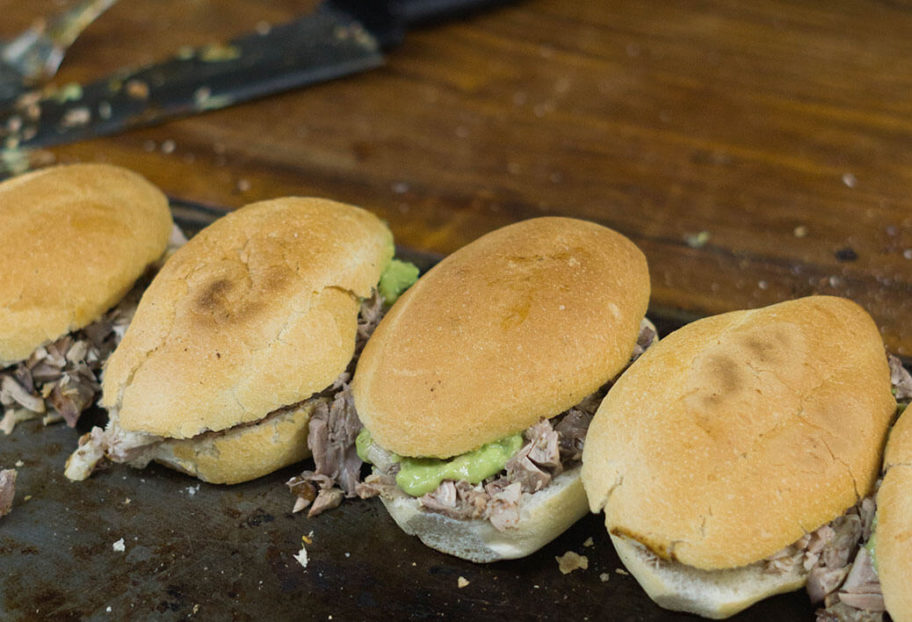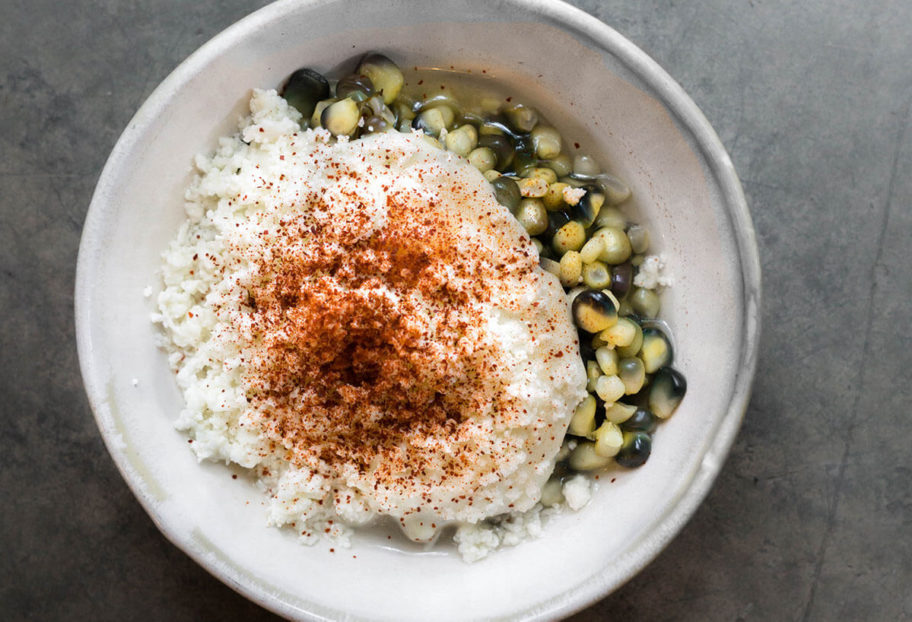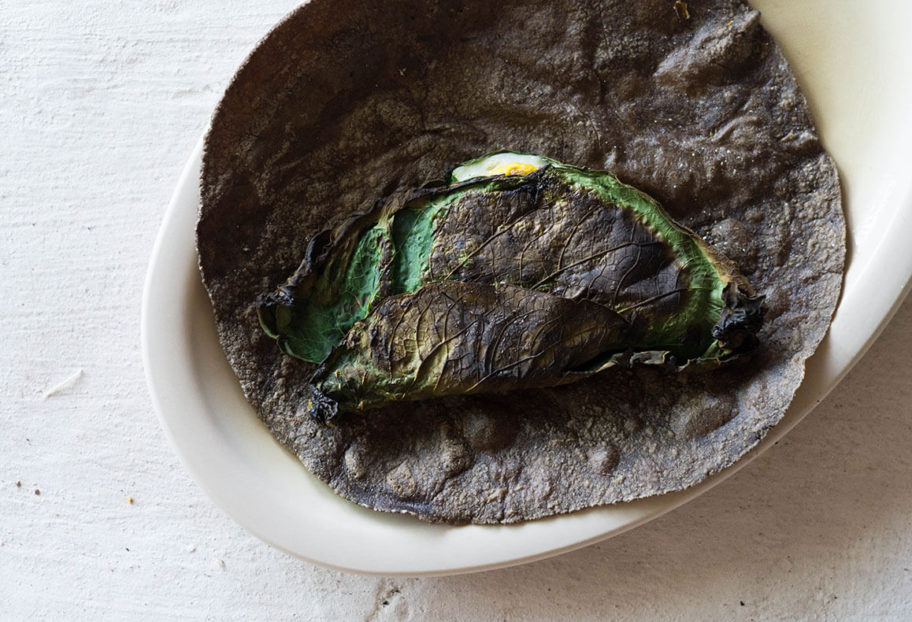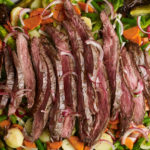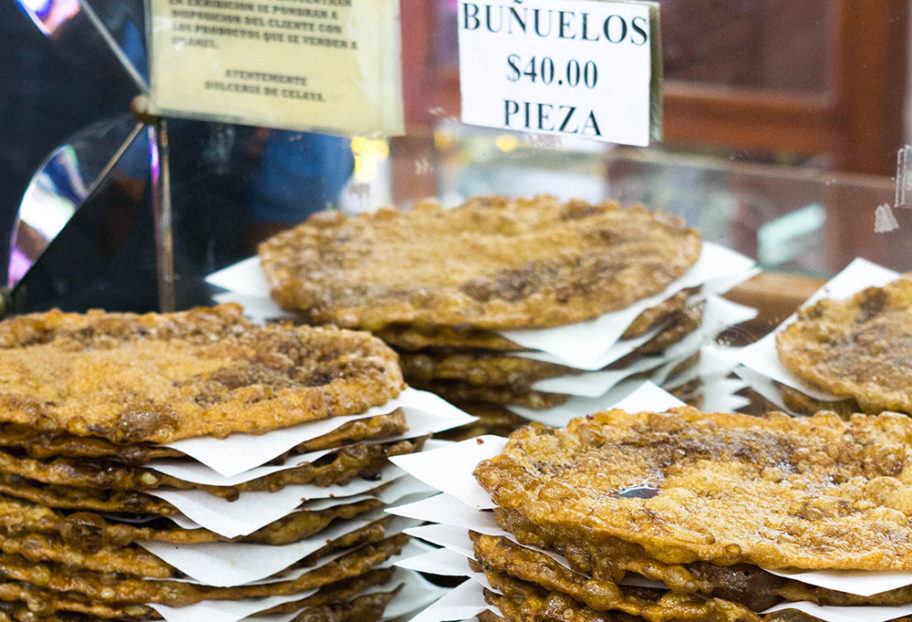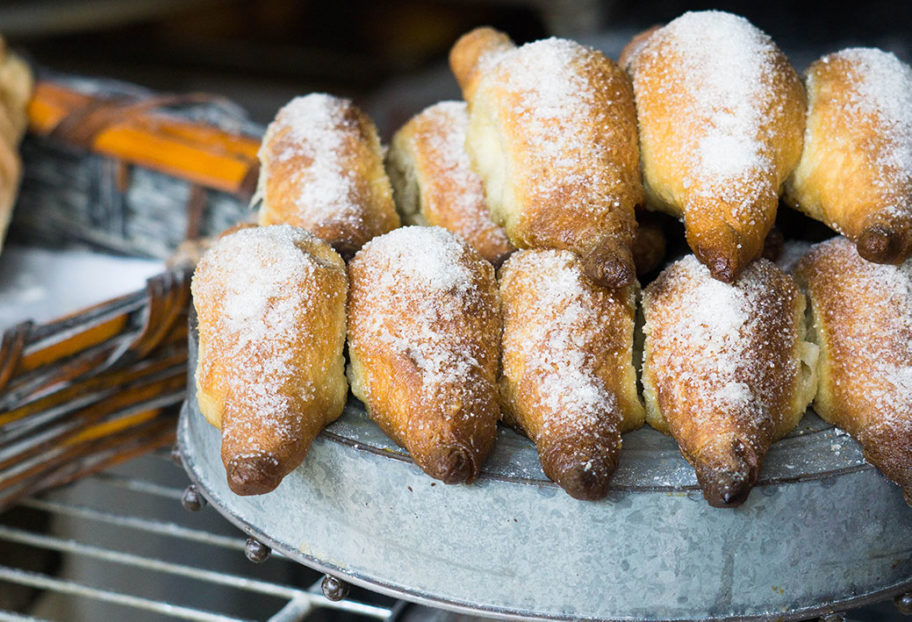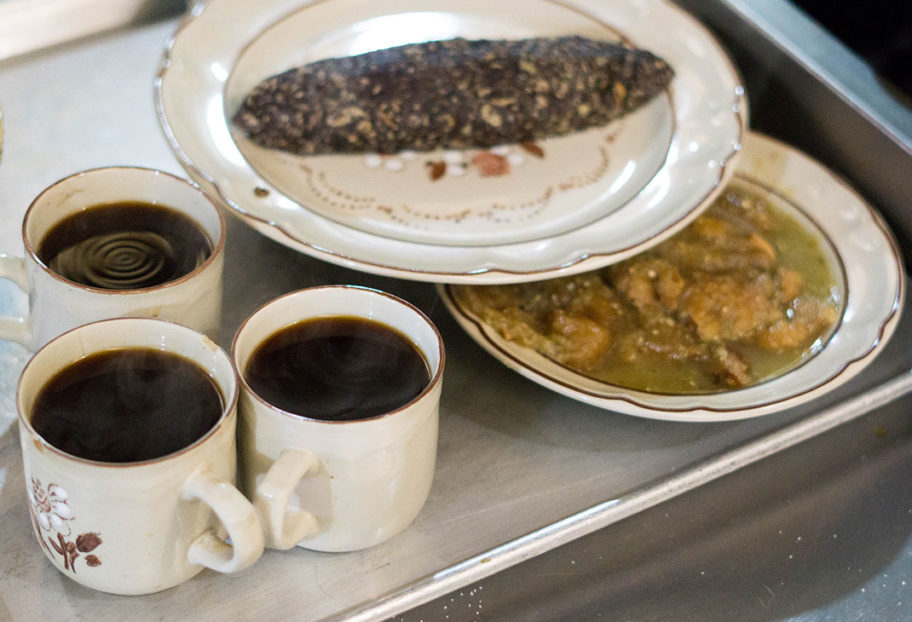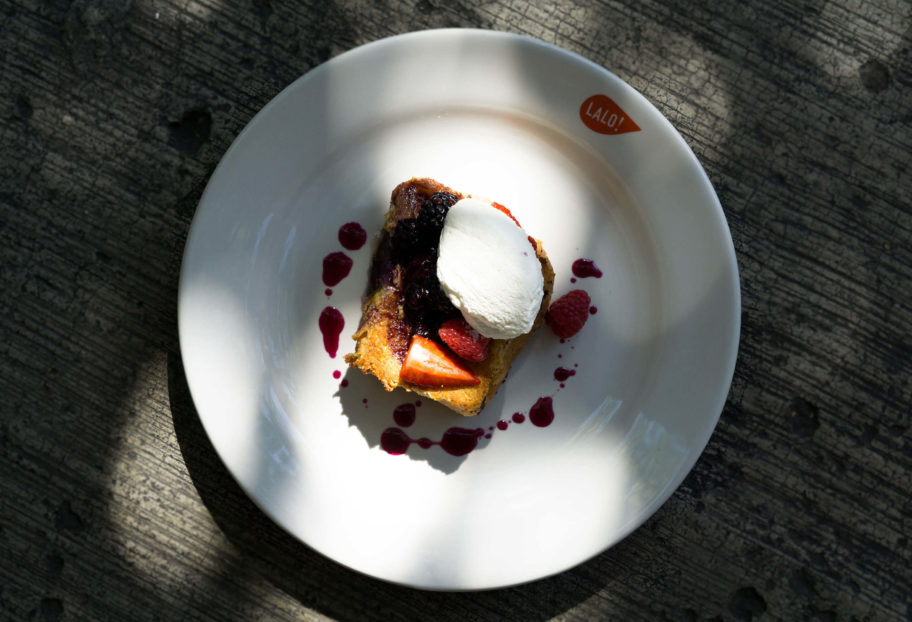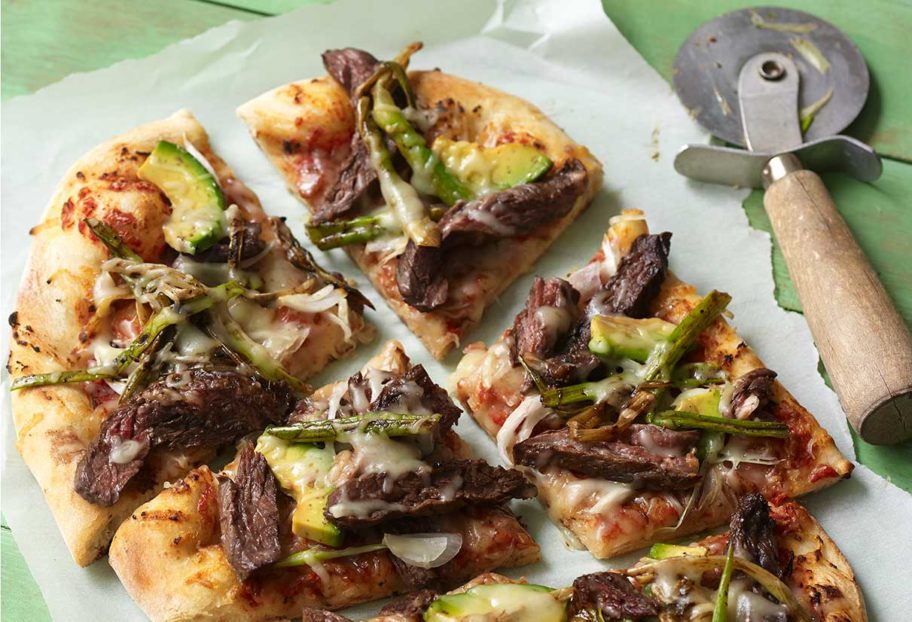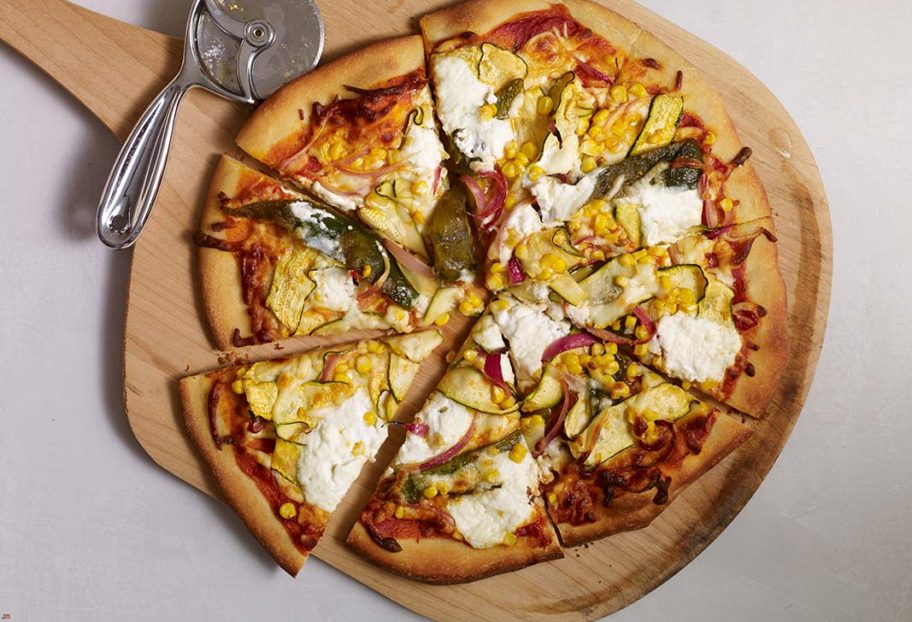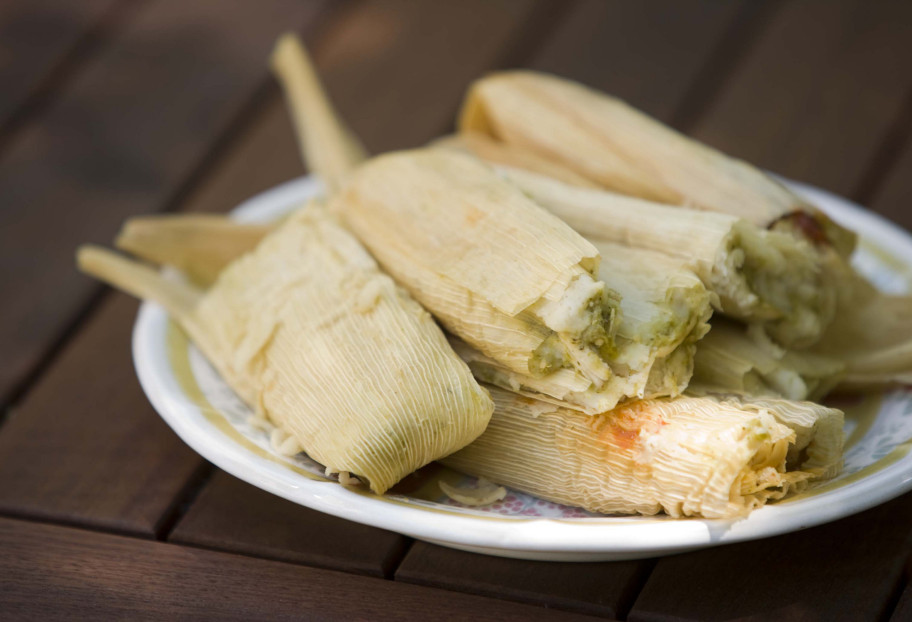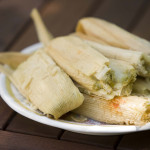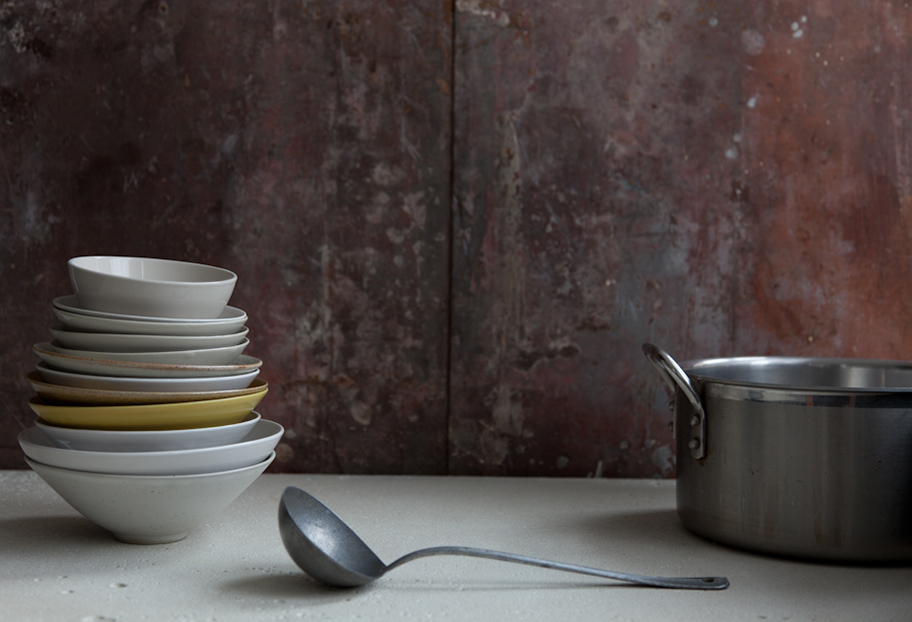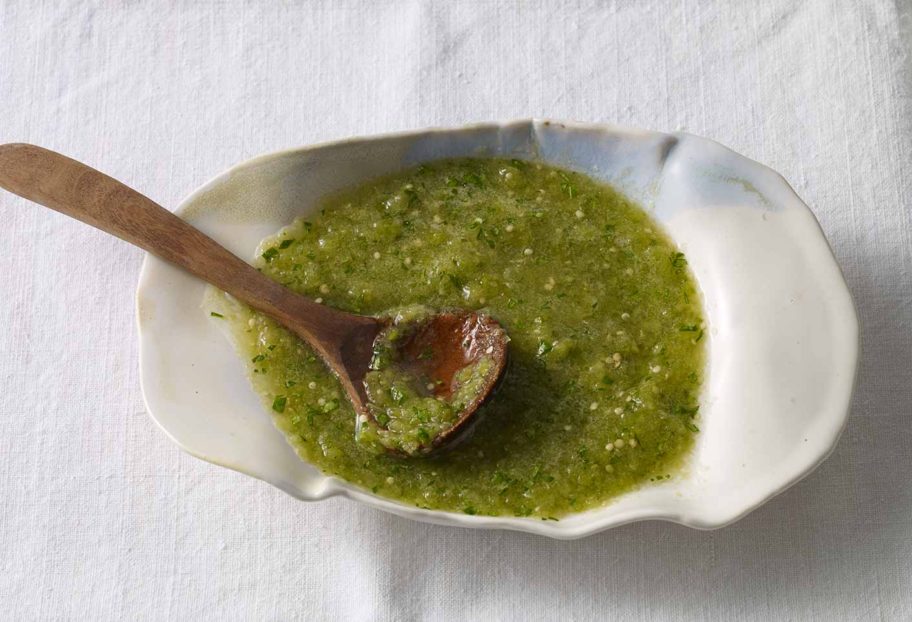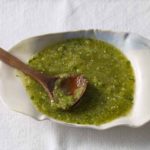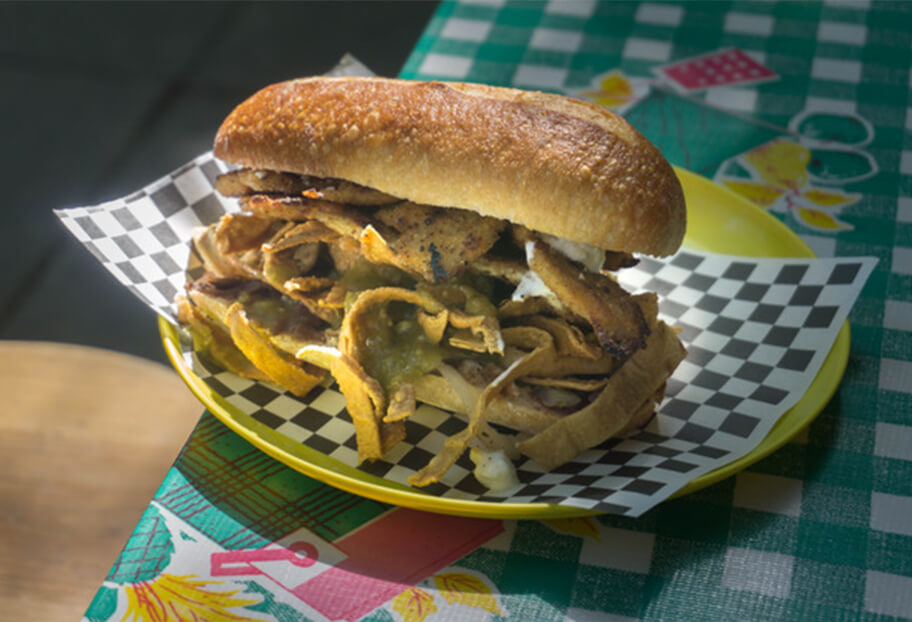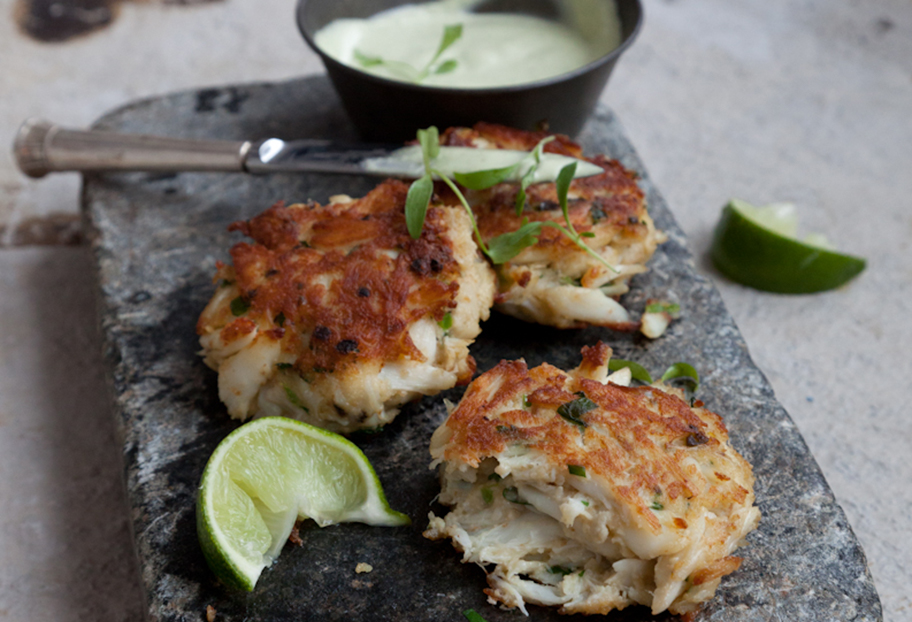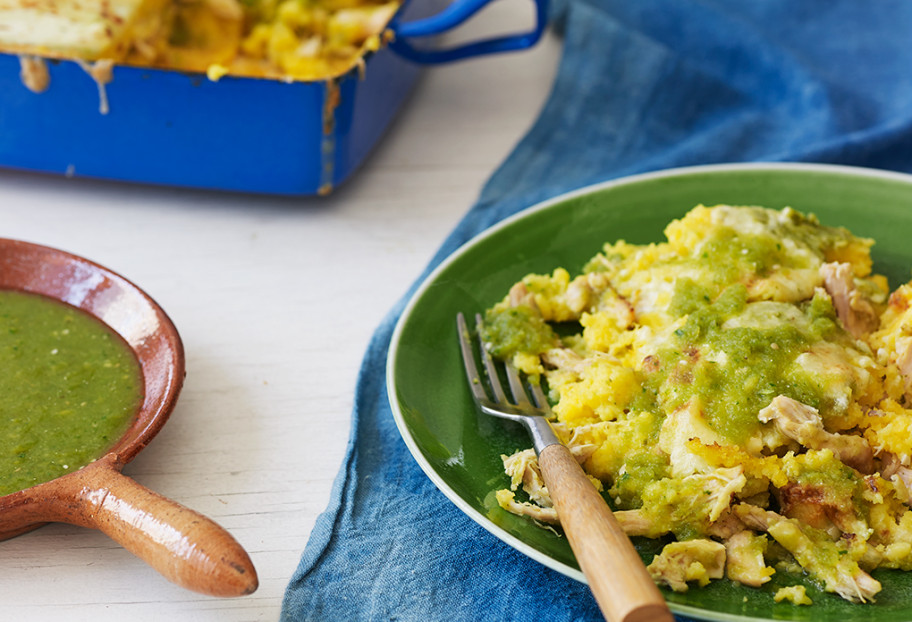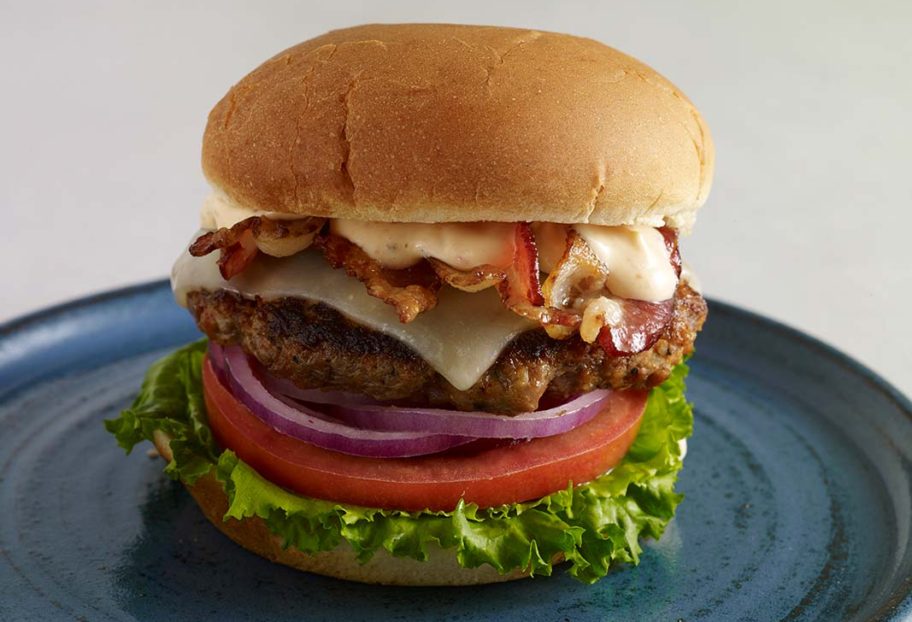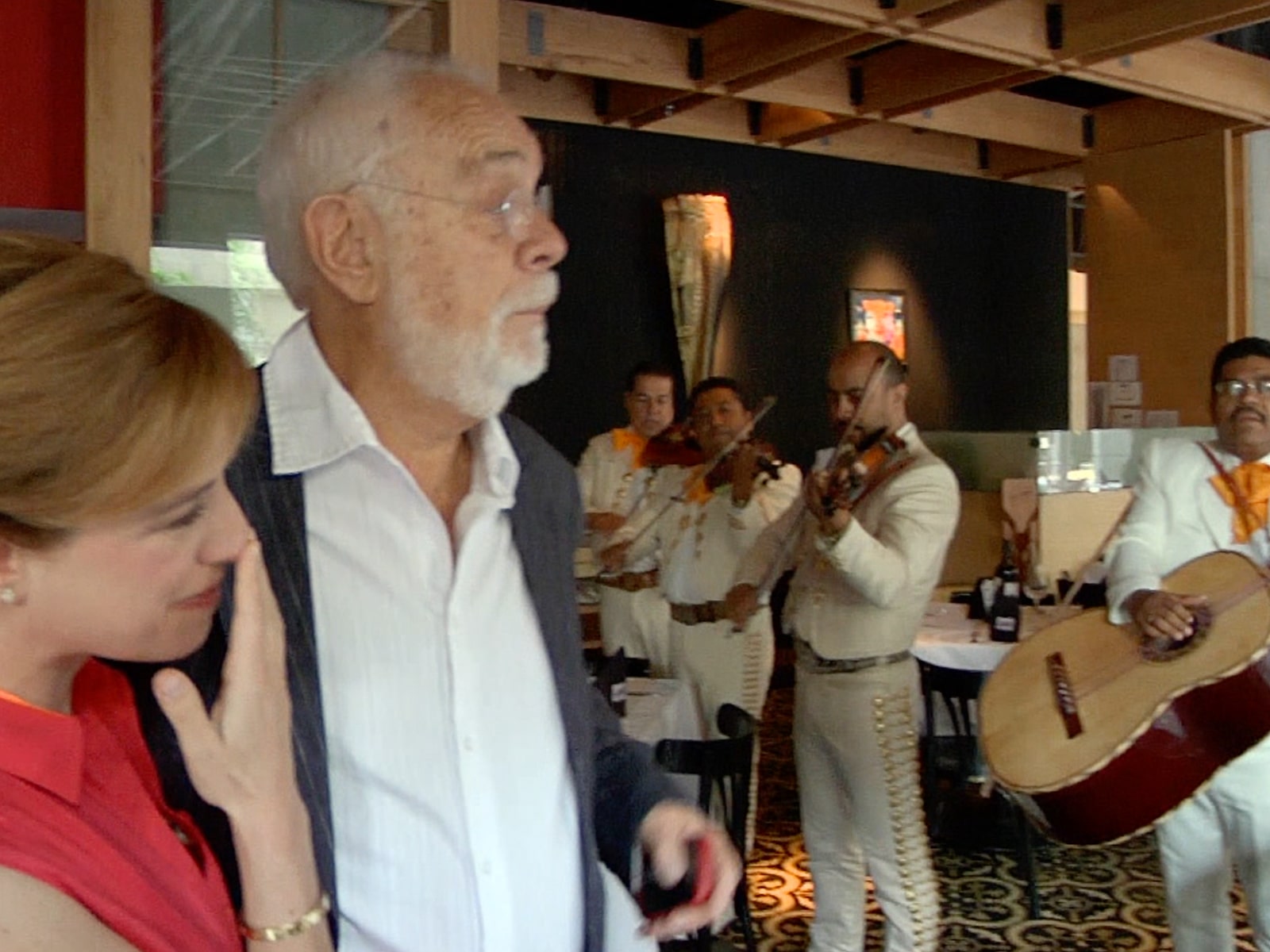Mexico City
Alfonsina
By Eduardo | @eduardoplaschinski
The experience at Alfonsina starts the moment you walk into Jorge Leon’s home on the outskirts of Oaxaca Airport. You’ll be driving through windy, narrow streets until you reach one of the many dirt roads of San Juan Bautista La Raya, Oaxaca. The first time you visit Alfonsina, you’ll probably be driving up and down the street a hundred times with no luck finding the place. No signage, Alfonsina is located inside a modest brick home. Home to Jorge, his mom, siblings and cousins. Together they work hard to serve affordable lunch menus to the community nearby and a 5-course menu available to those who seek a simply delicious meal.
Each day, early in the morning the team visits la Central de Abasto market in the heart of Oaxaca to buy fresh fruits and vegetables that are grown in different parts of the state which accompany dishes based on corn, seafood, and meat. Jorge’s family is originally from the Mixteca, a small community 4 hours from the city. This is where the corn and meat come from.
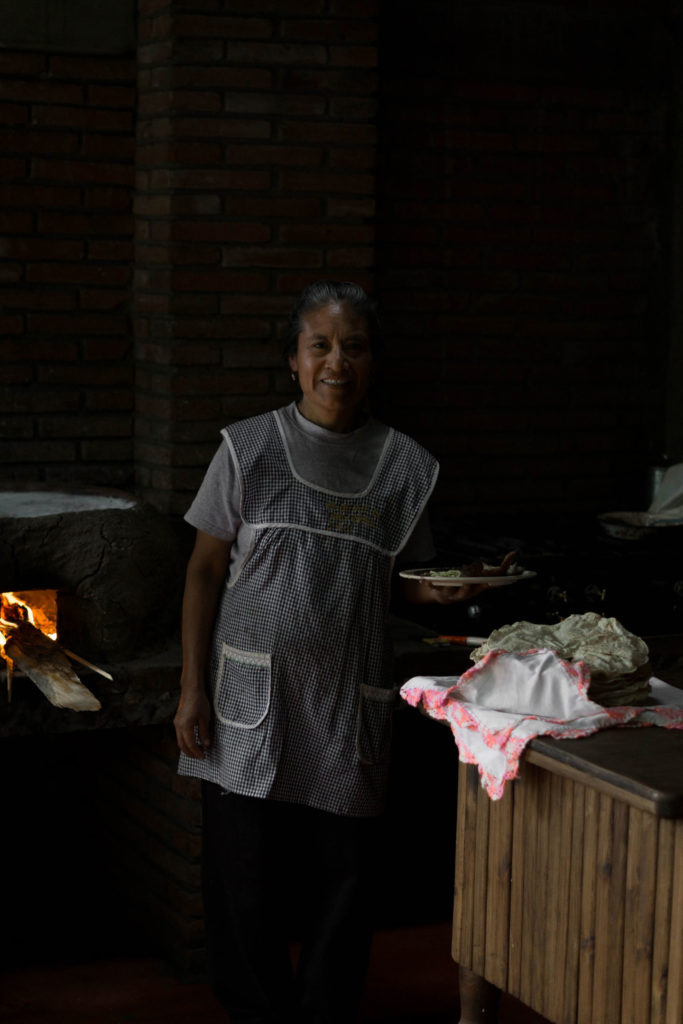
You’ll be sitting in a naturally-lit room with two communal tables facing a small open kitchen. Jorge’s dad does the nixtamalización, his mom will be making the tortillas, his siblings will be serving, and one of his cousins will be cooking right next to him.
Dishes range from an enmolada to fresh fish with jicama or a sope with sausage sourced from Etla, a small valley in Oaxaca. For dessert a traditional cup filled with fruit jello, yogurt, and fresh fruit.
Jorge’s career brought him through some of the best restaurants in the country such as Casa Oaxaca and Pujol, though it’s back at home where he’s chosen to do what he loves.
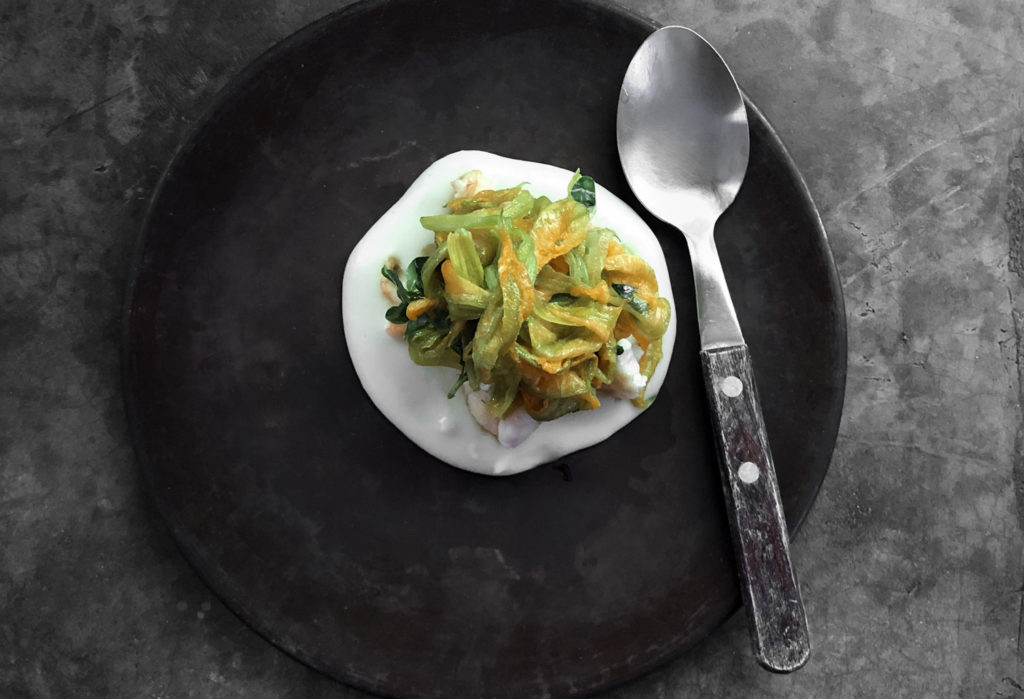
Alfonsina works based on a direct message reservation system, it is not open to the public. If you’re reading this you’ll want to know how to reserve for your next trip to Oaxaca — it’s as easy as messaging @cocinan on Instagram.
Alfonsina, Calle García Vigil 183, San Juan Bautista la Raya, Oax., Mexico
Tamales Madre
By Eduardo | @eduardoplaschinski
Walking along Liverpool street in Mexico City’s Colonia Juárez, I stumbled upon a tiny, beautiful space filled with natural wood, large containers with different kinds of heritage corn varieties displayed, and hard-working people hand-making tamales on a large workspace with stools for customers to sit and enjoy the action.
Regina and José are the founders of Tamales Madre. Friends and cousins that are on a mission to find the best corn varieties in Mexico. Heritage corn, free from genetic modification, pesticides, chemicals and toxins. Tamales Madre works with different heritage corn producers that deliver corn varieties that are rich in flavor, texture and color.
Both Regina and José were convinced that the tamal scene in Mexico City wasn’t represented correctly. Mexicans perceive tamales as street food, far from something delicate or looked after, and the cousins teamed up to change that.
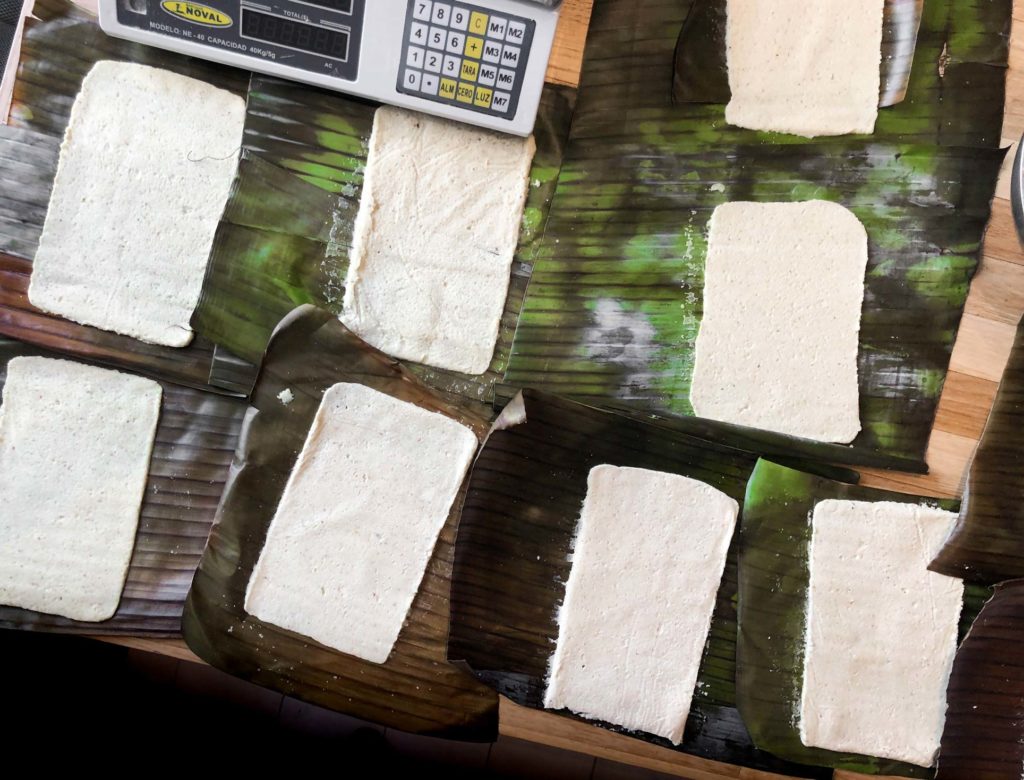
After lots of test runs and analyzing recipes and methods used in traditional Mexican kitchens, Regina and José realized animal fat wasn’t a necessary ingredient in the preparation.
The tamales here are prepared with vegetable shortening, as opposed to traditional tamales that are made with lard. This means lighter on the stomach, healthier and leaving the corn as the protagonist in the batter – opposed to dominating the flavor of the heritage corn.
The decadent tamales range from savory to sweet. Black beans and hoja santa, mole and plantain or cacao with pinole custard. Each month there’s a new tamal available on the menu, a special that focuses on representing a certain region’s techniques and flavors.
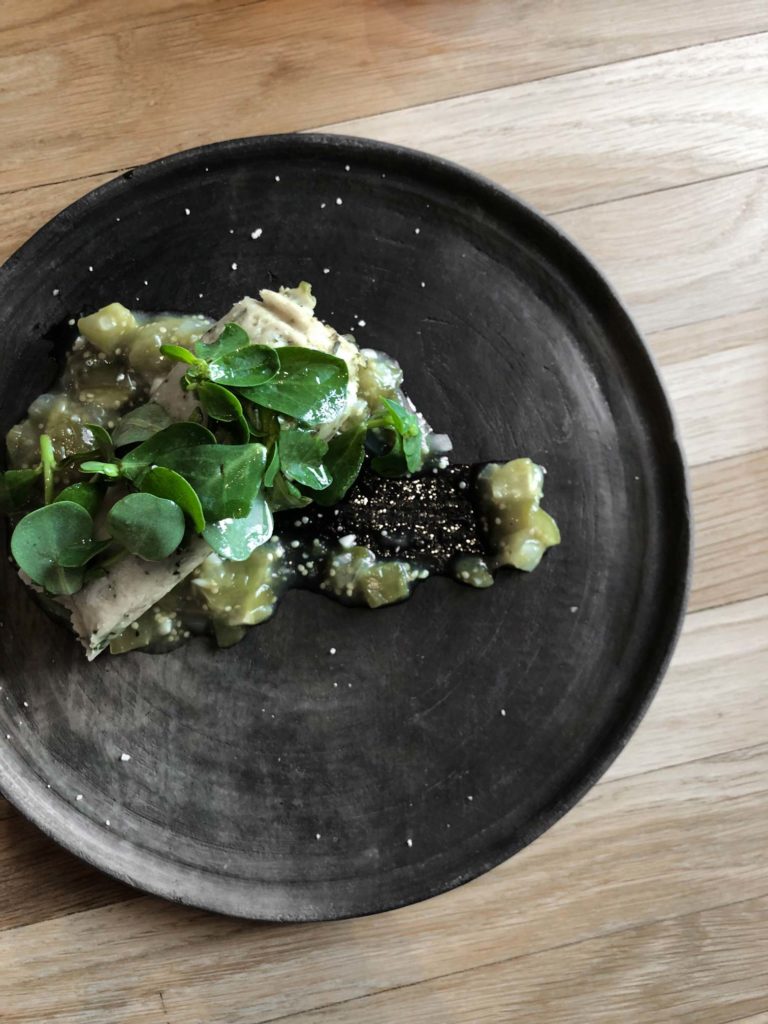
Tamales Madre is a deep dive into culture, tradition and knowing the origin of the ingredients that are used to prepare the tamales that you’ll crave each time you walk by.
Tamales Madre, Calle Liverpool 44a, Juárez, 06600 Ciudad de México
Niddo
By Eduardo | @cazadordelomejor
I have enjoyed being the Mexico City picks correspondent here at PatiJinich.com. Today’s recommendation is quite personal and may be a bit biased because the place I am recommending was opened by my mom (Karen) and I. It is called Niddo.
Niddo is a small corner space on a quiet, tree-filled street called Dresde. In Mexico City’s Colonia Juárez, just a block behind Paseo de la Reforma and a couple minutes away from the iconic Diana Cazadora statue. It’s a street most people had never heard of or drove by, yet it’s located in the very heart of this city.
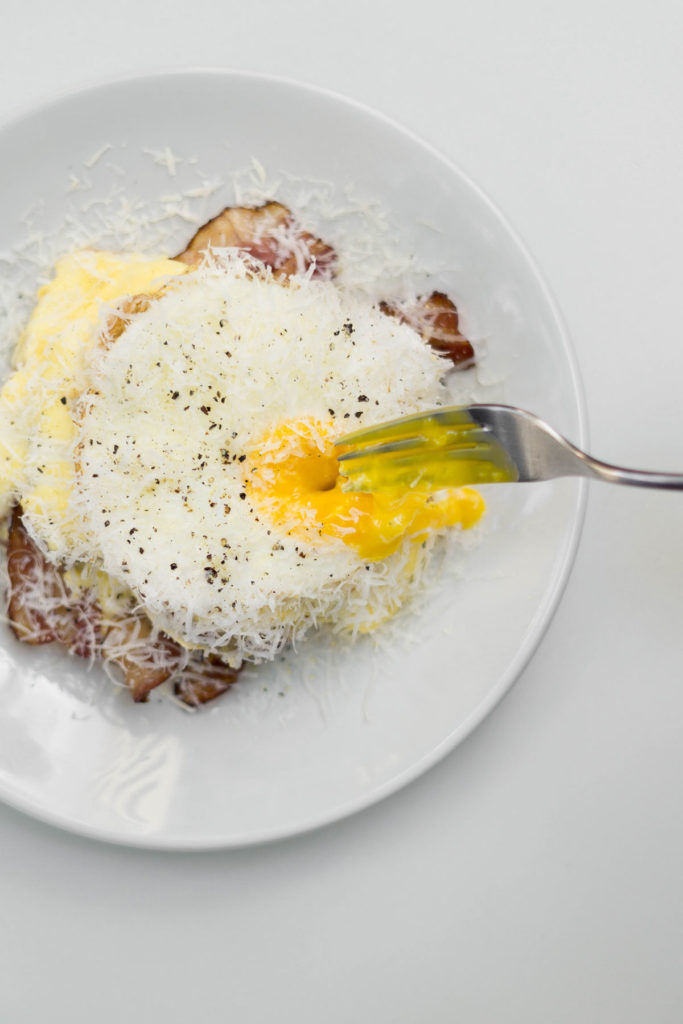
The space is divided into two concepts: the open kitchen and the café. Breakfast, lunch and Sunday brunch in the kitchen space. Coffee from Chiapas, baked goods, beverages and a collection of items that we’ve been curating for some time are for sale in the café space.
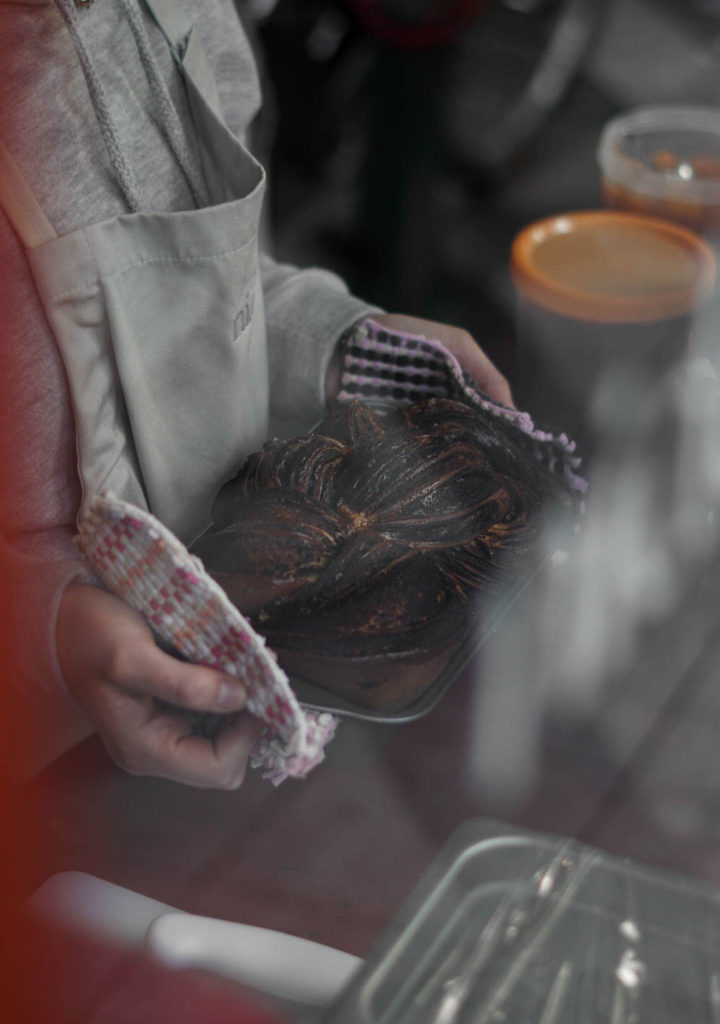
We like to call our food “comida que apapacha,” which means food that hugs your soul — and your stomach. We make very simple food with the best ingredients and let some of our family roots and history into each dish. From babka to shakshuka to chilaquiles or a grilled cheese sandwich. I grew up in a Jewish family in Mexico. My great-great-grandparents were Polish, and we lived for a long time in Vancouver, a very multi-cultural city. We picked up on a lot of different cuisines along the way.
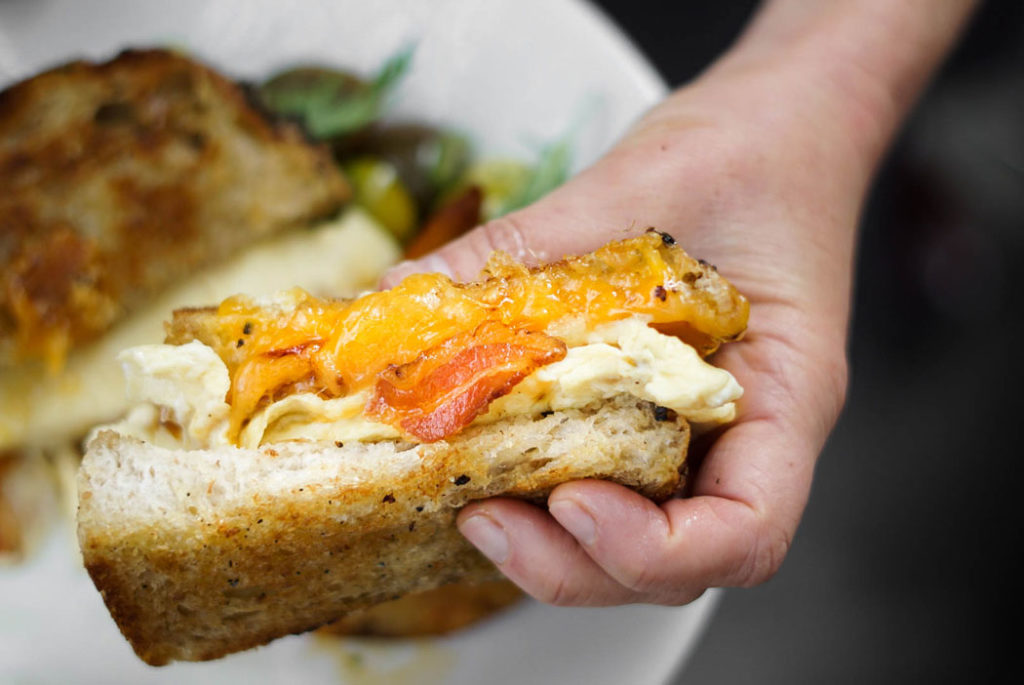
Niddo is tiny, yet was designed to feel abundant with mirrors on almost every wall, tall ceilings and arched passageways — and a guaranteed view of the open kitchen at every seat. One of our main goals while designing the space was to eliminate the division you usually find between the kitchen and dining room at a traditional restaurant. Niddo’s entrance is actually through the kitchen.
The shakshuka at Niddo is the perfect breakfast. A rich and hearty tomato and bell pepper stew mixed with cumin, cayenne pepper, zaatar, fresh parsley, two poached eggs, and Lebanese yogurt. My mom learned to make it during the frequent trips to Israel as a child and perfected it after years and years of making it at home.
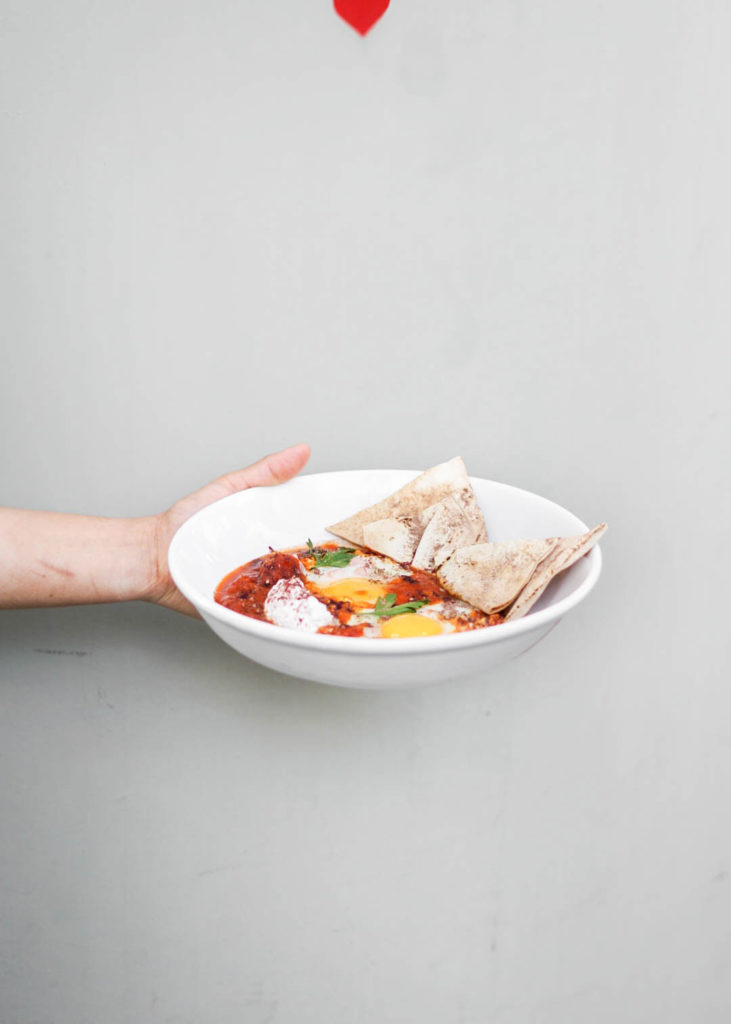
Niddo’s menu is small and is constantly changing and evolving. We try to travel as much as we can around Mexico and different countries to absorb different cultures into our food and bring home ingredients.
Niddo feels like home and tastes like it too.
Niddo, Dresde 2, Colonia Juárez, CDMX
Heladería Casa Morgana
By Eduardo | @cazadordelomejor
A 3- by 3-meter window in Mexico City’s Colonia Juárez where passionate people make perfect Italian gelato using seasonal Mexican ingredients, and the result is hard to compare to anything else.
It was during a dream one night that Kirén Miret (founder, co-owner and master gelato maker at Casa Morgana) decided she was going to open a gelato shop. That night, she quickly woke up and started jotting down ideas — flavors, ingredients, anything that came to her mind. This would result in becoming the root of the ice cream shop she’d always dreamed of. Kirén had no gelato experience. The next morning, she started searching for gelato courses in different parts of the world until one in Los Angeles popped up.
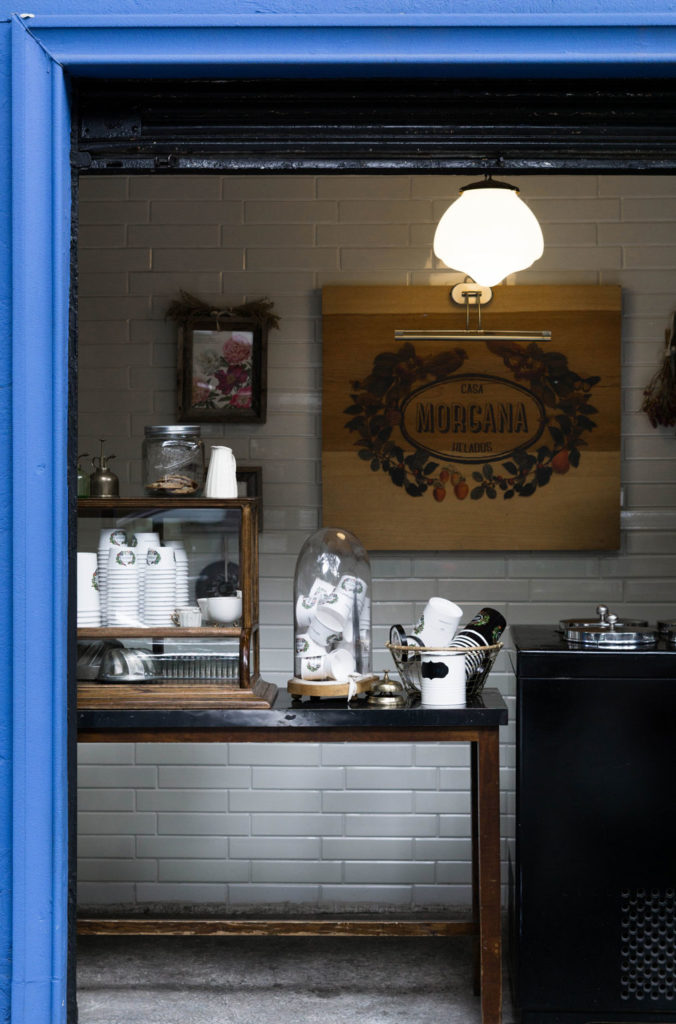
Shortly after, she was back in Mexico City making gelato with a small home gelato maker and bringing samples into her office. Kirén’s passion grew stronger, and a couple months later, she was all the way in Italy perfecting her skills. There she graduated as a master gelato maker.
Casa Morgana is run by Kirén, Diego (Kirén’s nana’s son), Elías (Diego’s father), Tani and Javi. It’s pretty much a family business. They make gelato because it makes them happy, not for any other reason. No artificial coloring, flavors or preservatives are used. Only fresh seasonal ingredients, sugar and milk, which are turned into gelato in a machine Kirén compares to a Ferrari.
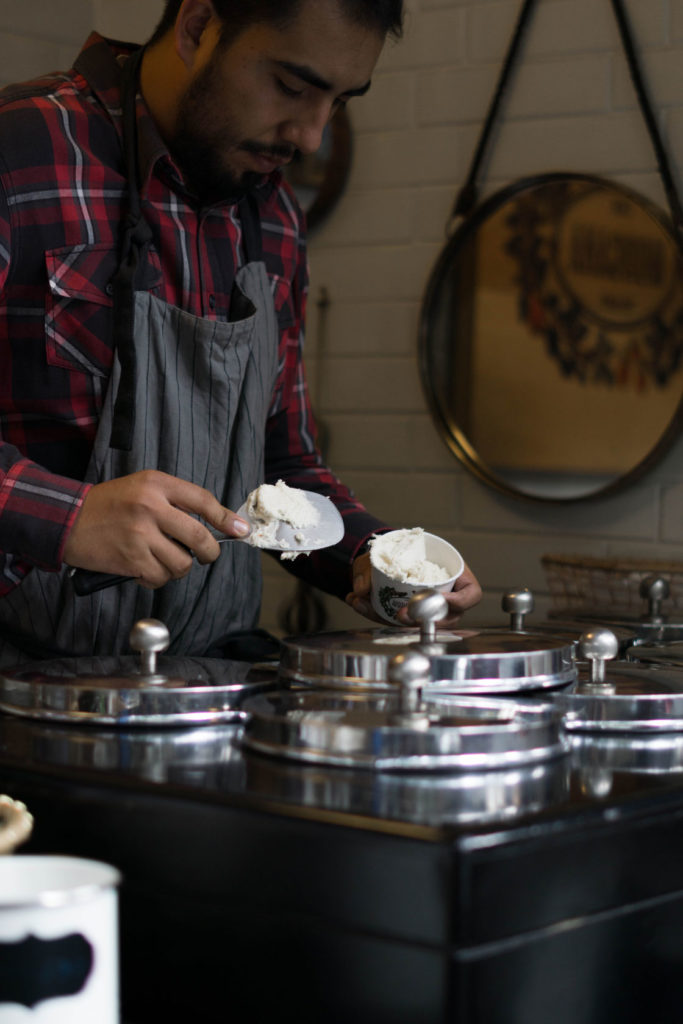
The flavors at Casa Morgana range from mango, to rosca de reyes, to chocolate oaxaqueño. It all depends on the season, and each day means a different menu. November brings pan de muerto gelato, and December brings churros and ginger snap.
Each detail at Morgana is looked after. The containers in which the gelato is stored, the sugar to milk ratio, the cups that are flown in from Canada, the metallic spoons, the spades which are used to serve – they all work together to make Morgana’s gelato so creamy and irresistible.
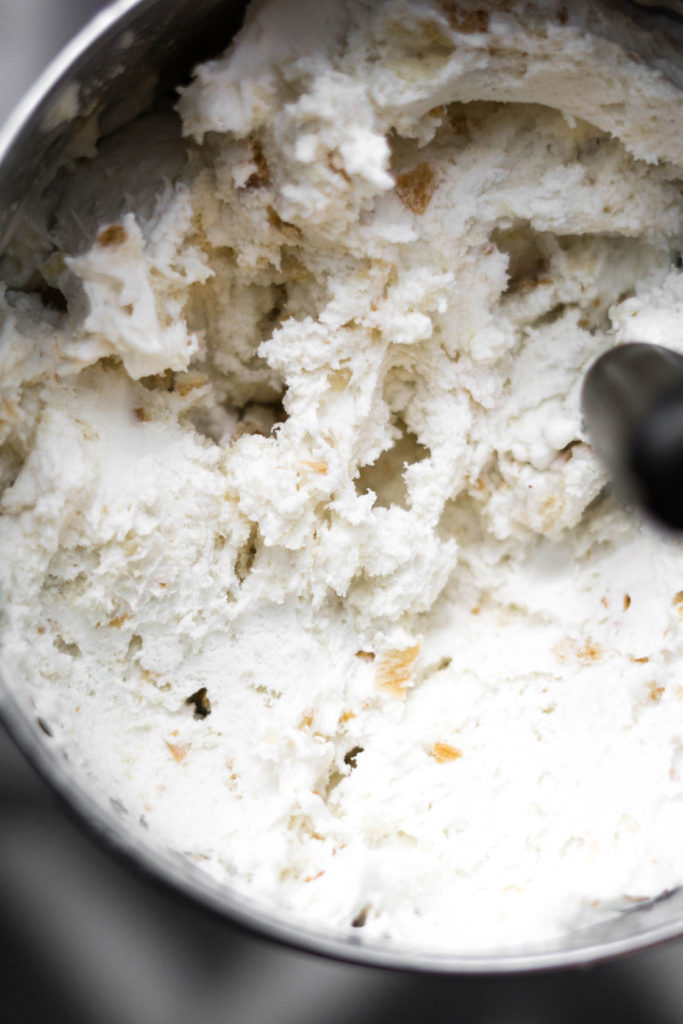
Kirén has always been an ice cream person. When she was a little girl, she liked the more normal, chocolate-covered vanilla ice cream pops with sprinkles. Today, her mission is to make the best ice cream in Mexico – and she’s up there.
Heladería Casa Morgana, Calle Milán 36, Juárez, CDMX
Contramar
By Eduardo | @cazadordelomejor
Mexico City’s freshest and tastiest seafood, many say. Contramar is known to be the city’s most buzzing spot for locals and foreigners alike. There’s no trip to Mexico City and no weekend well spent without lunch at Contramar.
Cramped wooden chairs and small tables with white tablecloths, woven lamps, blue painted murals, a daily inspirational quote written in large font on the wall, and fast-moving waiters that have been working at the restaurant for over a decade make up the ambiance.

Gabriela Cámara, owner and founder of Contramar, had a very clear vision from the start: honest and fresh food made from the best product, outstanding service, and a great vibe that would provoke sobremesa. Andrés Barragán, chef of Contramar, met Gabriela at the very beginning, almost 20 years ago. Andrés, originally from Puebla, developed his cooking skills with Gaby and continued to improve them on his own. Tuna tostadas, fresh clam ceviche, pescado a la talla and the tuna carnitas are some favorites.
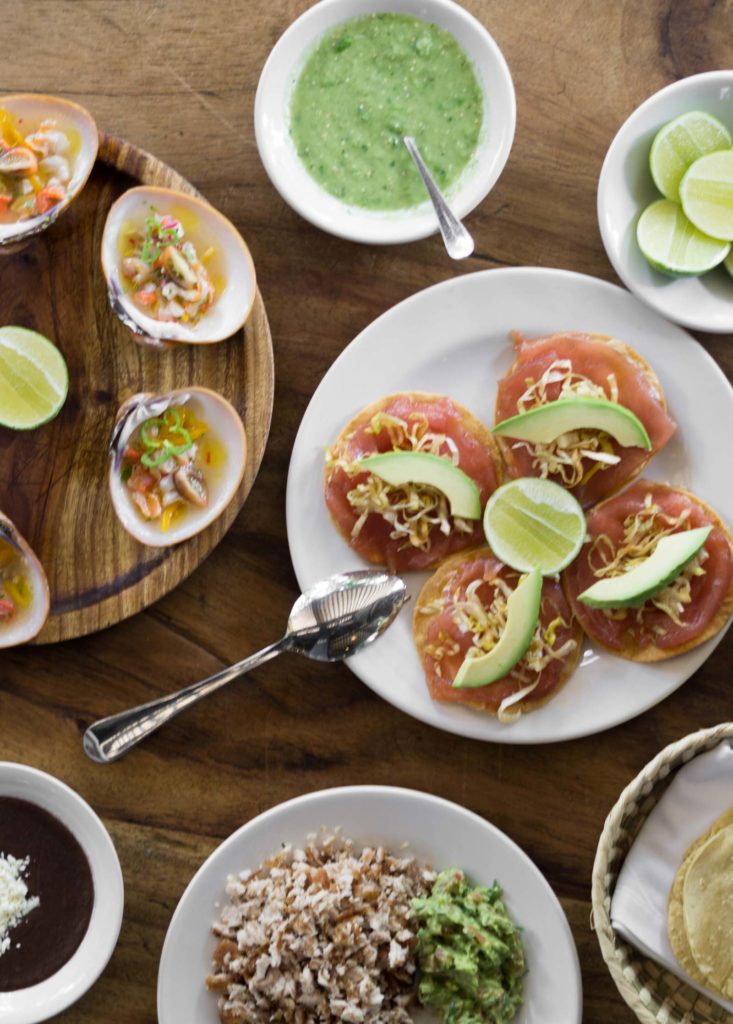
Contramar’s tuna carnitas are made using the fatty part of the tuna, which is chopped then fried until crispy on the outside and tender and juicy on the inside. After frying, the meat is served with chunky guacamole, refried beans and fresh tortillas made with heirloom corn from Tepoztlan. For dessert, waiters will be dancing around with large trays filled with sweets ranging from fresh chocolate cake to mountains of fresh merengue with whipped cream and strawberries.
Contramar just turned 20 and things just keep getting better for everyone.
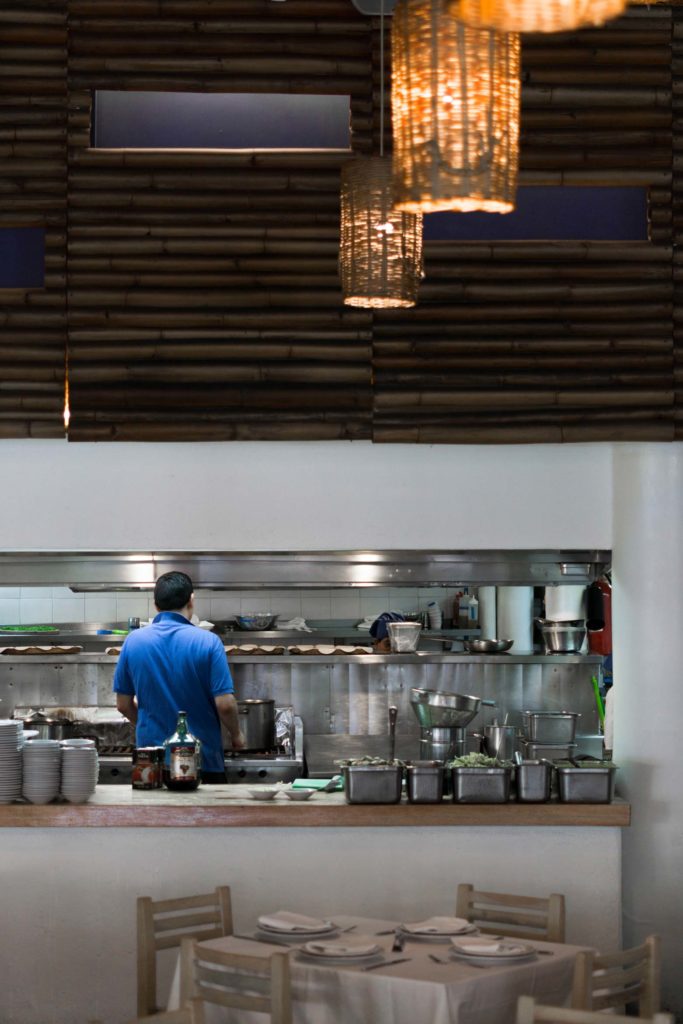
Contramar, Calle de Durango 200, Roma Norte, CDMX
Sanborns’ Swiss Chicken Enchiladas
Sanborns’ Swiss Chicken Enchiladas
Ingredients
- 1 1/2 pounds tomatillos husked, scrubbed and rinsed, and quartered
- 2 garlic cloves peeled
- 1/2 cup coarsely chopped white onion
- 1 to 2 serrano chiles stemmed, seeding optional
- 1 1/2 cups coarsely chopped cilantro leaves and upper part of stems
- 1 teaspoon kosher or sea salt or to taste
- 1/4 cup water
- 1 tablespoon canola or safflower oil
- 1 cup chicken broth, or vegetable broth, or water homemade or store-bought
- 1 cup Mexican style cream, Latin-style cream or heavy cream
- 12 Corn tortillas
- 3 cups shredded cooked chicken
- 3 cups Oaxaca or Muenster cheese, grated
Instructions
- In a blender, combine the tomatillos, garlic, onion, chiles (start with 1 and add another if desired), cilantro, salt and water. Puree until completely smooth.
- Heat the oil in a medium saucepan set over medium heat until hot but not smoking. Add the pureed tomatillo mixture, being careful as it will sear and splutter. Cover partially with a lid and cook, stirring occasionally, until it thickens and darkens, about 4 to 5 minutes.
- Stir in the broth, cover partially, and simmer for 5 minutes more. Turn off the heat and stir in the cream. Set aside.
- Prepare the tortillas for enchiladas by either heating them on a comal or passing them through hot oil.
- Preheat the oven to 400 degrees Fahrenheit.
- Pour about 1 cup of the cooked salsa verde into a 9”x13” baking dish. One by one, place a tortilla on a plate or cutting board and arrange about ¼ cup shredded cooked chicken down the middle. Roll up into a soft chubby enchilada and place seam down in the baking dish. Continue with the rest of the tortillas.
- Pour the remaining cooked salsa verde over the enchiladas and sprinkle the grated cheese on top. Place in the oven and bake for 10 to 15 minutes, or until the cheese has completely melted and begun to lightly brown.
Notes
Tita Chelo’s Frosted Flake Cookies
Tita Chelo’s Frosted Flake Cookies
Ingredients
- 1 1/3 cups unsalted butter at room temperature
- 1 1/4 cups granulated sugar
- 3 eggs at room temperature, cracked into a small bowl
- 1 tablespoon vanilla extract
- 1/8 teaspoon fine sea salt
- 3 cups all-purpose flour plus an additional 1/4 cup for shaping the dough
- 4 to 5 cups frosted flakes cereal of your choice
Instructions
- In a stand mixer, fitted with the paddle attachment, whip the butter until soft and fluffy, about 2 minutes. Add the sugar 1/4 cup at a time, beating well after each addition.
- Scrape down the sides of the bowl and the beaters. Add the eggs and continue beating until well mixed, another minute. Beat in the vanilla and salt. Add the flour 1/4 cup at a time, beating for a few seconds after each addition, and continue to beat until the flour is incorporated. The batter should be very smooth, homogenous and soft. Remove the bowl from the mixer.
- Cover 2 large baking sheets with parchment paper. Preheat the oven to 325 degrees Fahrenheit and position the oven racks in the middle and bottom thirds.
- Place 2 cups of frosted flakes on a large dinner plate or baking sheet and using your hands, squeeze and crumble the flakes to make them smaller, taking care not to grind them up completely. Place 1/4 cup flour on another plate and set it next to the plate with the frosted flakes, and have the parchment-covered baking sheets nearby.
- Dust your hands with the flour on the plate and scoop up about 1/4 cup of dough. Roll it into a ball and flatten the ball slightly in your hands, then put it into the crumbled frosted flakes to “bread” the cookie. Gently press the ball of dough into the flakes as you add about a teaspoon of crumbs to the top, then press into a ¼-inch thick, 3- to 4-inch round. Transfer to the baking sheet and repeat with rest of the dough.
- Bake 20 to 25 minutes, rotating the pans from top to bottom and front to back halfway through, until the cookies are light golden brown around the edges. Remove from the oven and allow to cool. Store in a tin or a jar.
Notes
El Huequito
By Eduardo | @cazadordelomejor
There are so many places to eat tacos al pastor in Mexico City and each one is unique. El Huequito’s original location on Ayuntamiento, a busy street in Mexico City’s downtown, has been serving tacos al pastor for almost 60 years. You order off the street and eat on the other side of the sidewalk at an aluminum high-top table with a variety of spicy salsas and freshly cut limes.
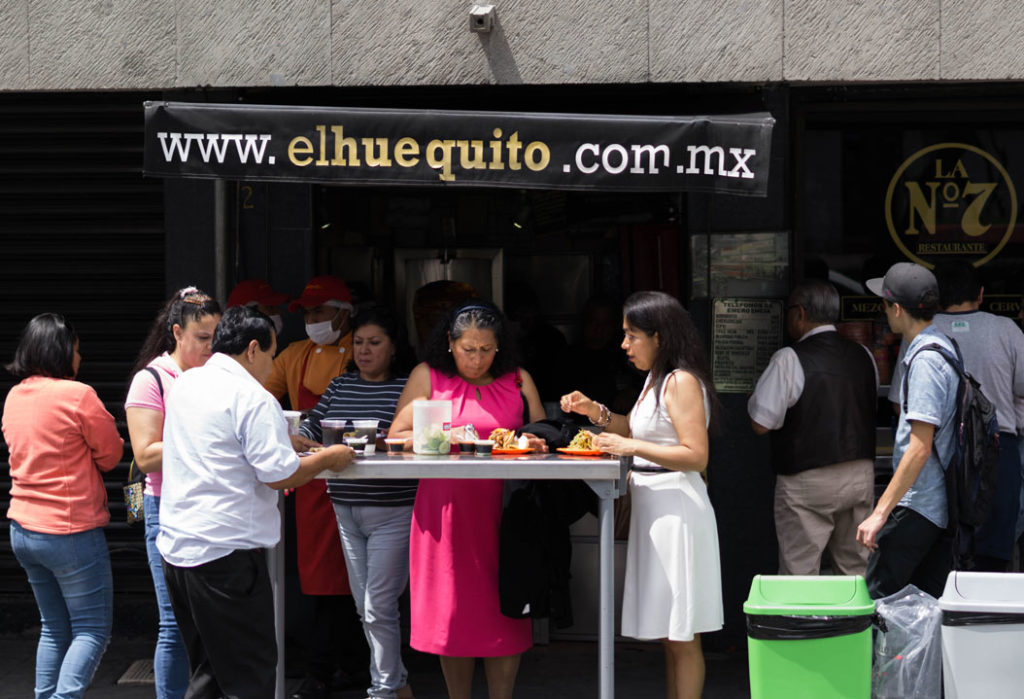
Pastor is crispy shavings of vertical spit-roasted pork marinated with dried chiles and spices. Very similar to shawarma or doner kebab, pastor was influenced by the strong Lebanese migration that occurred in Mexico in the early 1940’s.
In 1959, Guillermo Buendía and Amelia González started the business in a one-by-one-meter location. Due to the size, clients would refer to the taco shop as a “huequito,” meaning a very small space in Spanish.
The tacos al pastor at El Huequito are different than all the rest in Mexico City. No pineapple and no cilantro here. Just freshly shaved pastor meat wrapped in a tortilla with a little green salsa, chile de árbol salsa and onion, then straight back on the grill to seal in the flavor.
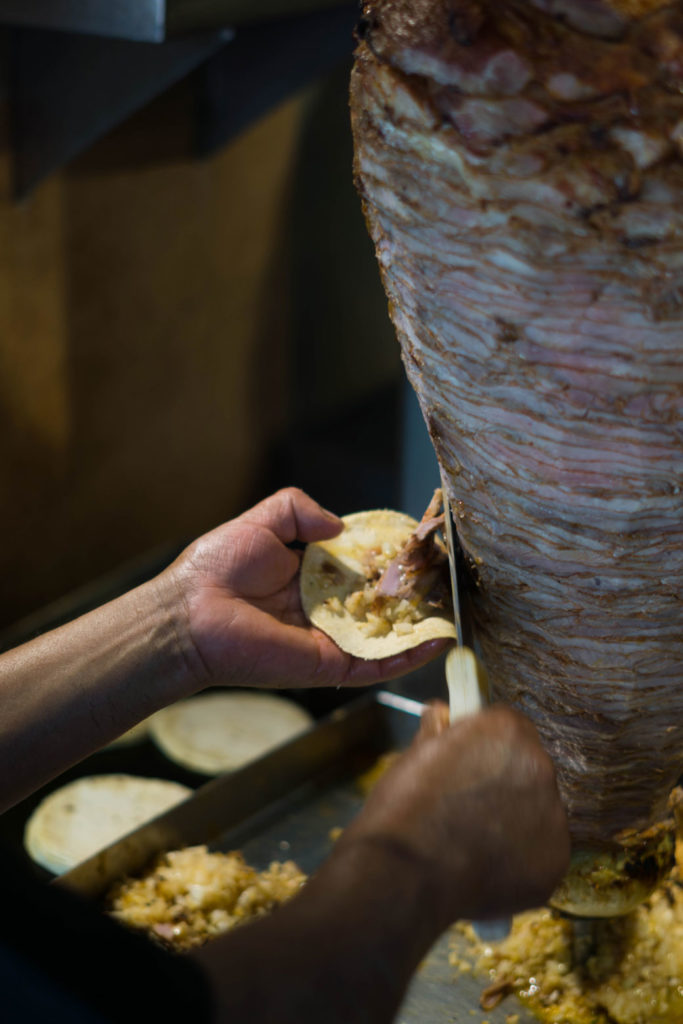
If you visit one of El Huequito’s newer locations, like the one in Condesa neighborhood, you’ll experience a longer menu with classics such as the especial — a mountain of pastor topped with corn tortillas, onion and green salsa, so you can make your own tacos.
A couple tacos al pastor with an ice-cold agua de horchata is probably one of the best combinations that exists in Mexico City’s street food scene today.
El Huequito, Ayuntamiento 21, Colonia Centro, Centro, 06050 Ciudad de México
El Rey del Pavo
By Eduardo | @cazadordelomejor
In Mexico, and many parts of the world, roasted turkey is mainly served during the holiday season. Imagine a place where shaved slices of juicy roasted turkey are served on a soft telera smothered with avocado and spicy rajas. This place exists, it’s located in the heart of downtown Mexico City and, here, you can devour a turkey torta during any month of the year.
El Rey del Pavo has been in business for over a century. It was founded in 1910 by Ramón Avellana, a Spanish man from Gironella, a small town just North of Barcelona. Ramón moved to Mexico in 1906 and brought with him homey recipes, which are still used in the kitchen, and the idea of charcoal roasting the turkeys. The first location was at Palma Street #19. After moving locations twice, Ramón’s nephew, Carlos Moreno, is in charge of the restaurant’s new location, just a couple blocks down, at Palma Street #32 in Mexico City’s historic center.
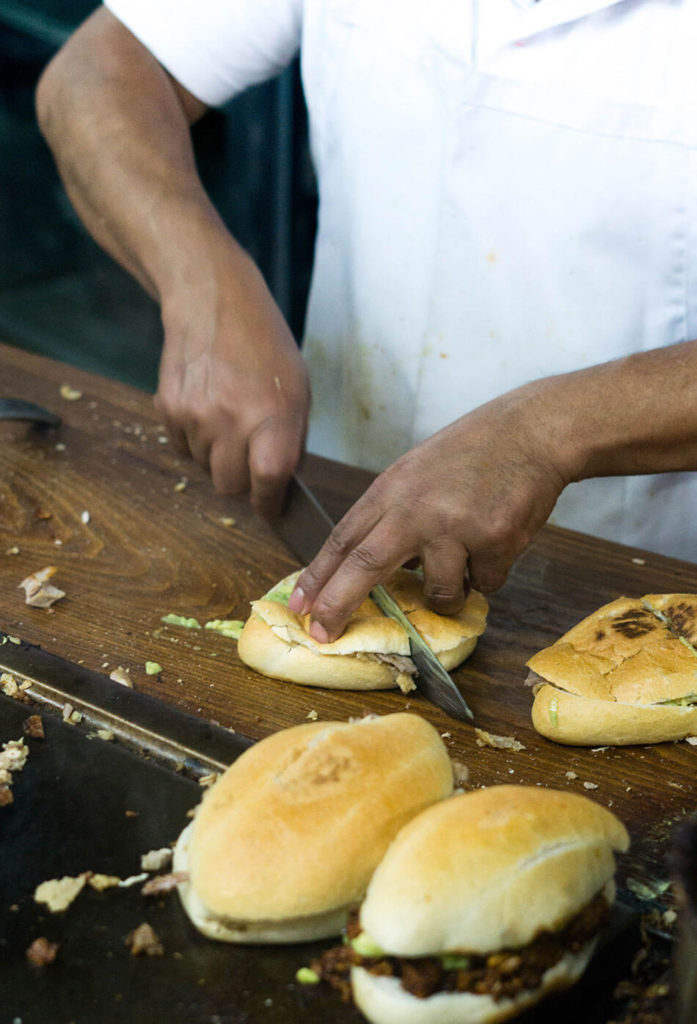
Walking in you’ll see an open kitchen and lined up are the torteros and taqueros making turkey tortas and tacos by the dozen. There are lots of options here ranging from turkey breast in adobo, thigh, and turkey chicharrón. The restaurant is simple, lots of wooden tables with blue leather chairs that make for a diner-like feel. Most of the people who go in for a bite have been visiting the place for years and bring different generations of the family to try it.
Each time I visit, I’ll start off with a taco and end with a torta, accompanied by a hot bowl of turkey broth to dip. It’s hard to leave this place without a takeout bag to enjoy for dinner.
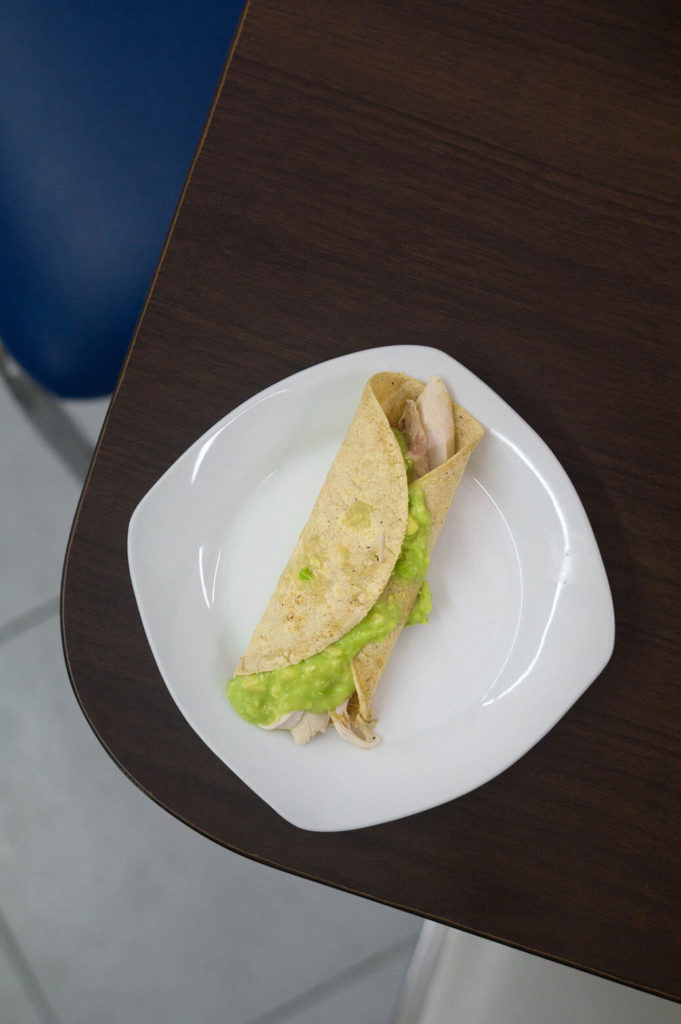
El Rey del Pavo, Calle de la Palma 32, Centro Histórico, Ciudad de México
Molino “El Pujol”
By Eduardo | @cazadordelomejor
From one day to the next, heirloom corn became a strong topic of conversation in Mexico. However, heirloom corn varieties have been a cornerstone of Mexican cuisine.
Chefs in Mexico City, Enrique Olvera included, have been using heirloom corn in their restaurants for years to make fresh tortillas, tamales, gorditas, or other antojitos that are made after the nixtamalized corn is turned into masa. Personalities like Olvera are aware of the importance of communicating the use of non-modified, non-GMO, pure, heirloom corn to Mexicans and the world.
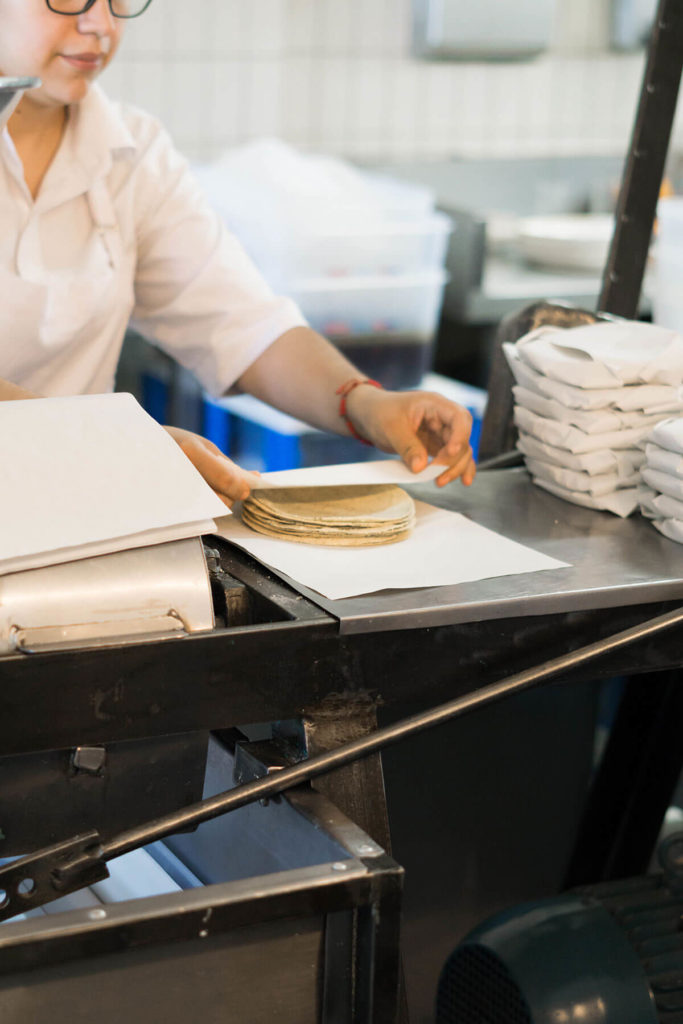
At the end of April, Molino “El Pujol” was born. A small tortilla shop in the Condesa neighborhood run by Enrique and his team, whose main restaurant Pujol is on San Pellegrino’s list of the 50 best restaurants in the world.
The team behind Molino has gotten very creative and built up a small menu that ranges from an avocado taco wrapped in an acuyo leaf, to the more complex corn cob smothered with chicatana ant, coffee and costeño chile mayo, to a cold glass of corn water to wash it all down. Molino is a sophisticated tortilleria, indeed.
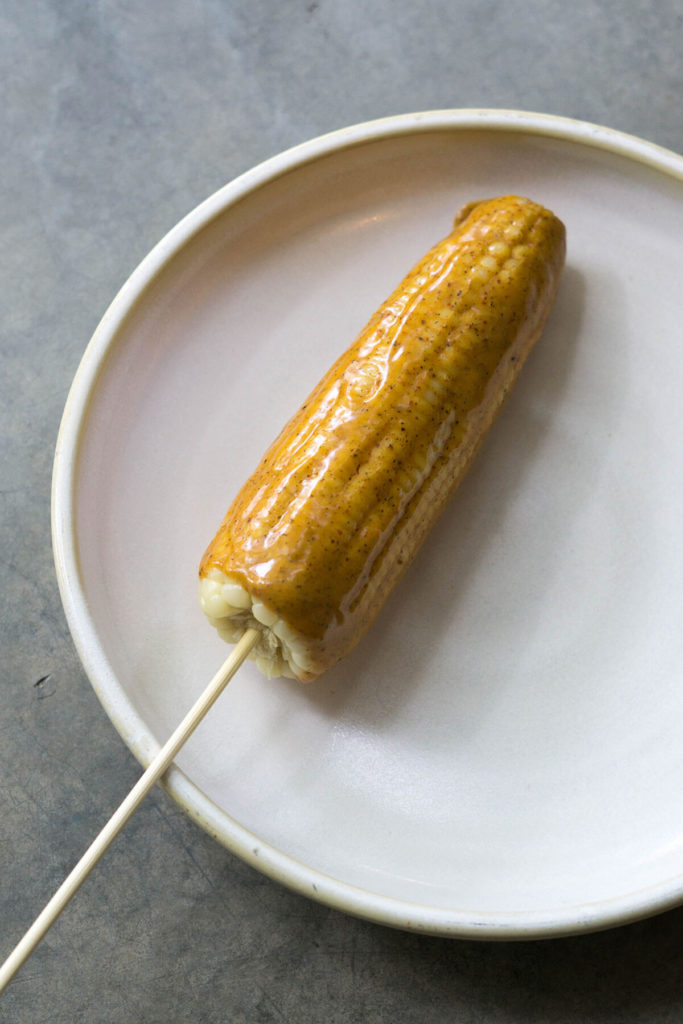
The place itself is simple, yet impressive. As you walk in, on the right, you’ll find a large corn mill and baskets of different heirloom corn varieties for sale. On the left, there is a small 6-seat counter with illustrations by Hilda Palafox, a well known Mexican artist and illustrator. At the end of the counter, you’ll see a refrigerator with fresh salsas and Mexican craft beer.
Molino “El Pujol” supports numerous families in different states of Mexico whose livelihood depends on producing heirloom corn varieties.
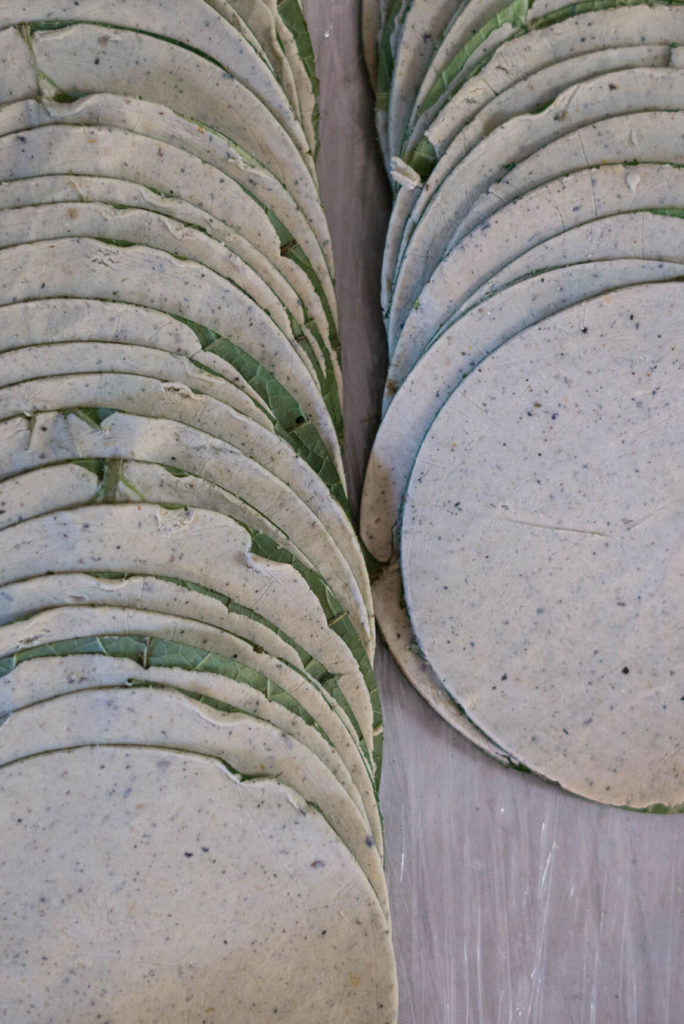
Molino “El Pujol,” General Benjamín Hill 146, Hipódromo Condesa, Ciudad de México
Itanoní Tortillería y Antojería
By Eduardo | @cazadordelomejor
Oaxaca is one of Mexico’s most interesting states, rich with culture, ingredients and tradition, and is home to a small and simple eatery that a big part of the country’s foodies talk about.
Itanoní is basically made up of plastic chairs, tables, colorful decorations hanging from the ceiling, clay comales and señoras who have a lot of experience cooking on them. Here you’ll find anyone from local kids enjoying an afternoon snack to business executives stopping in for lunch.
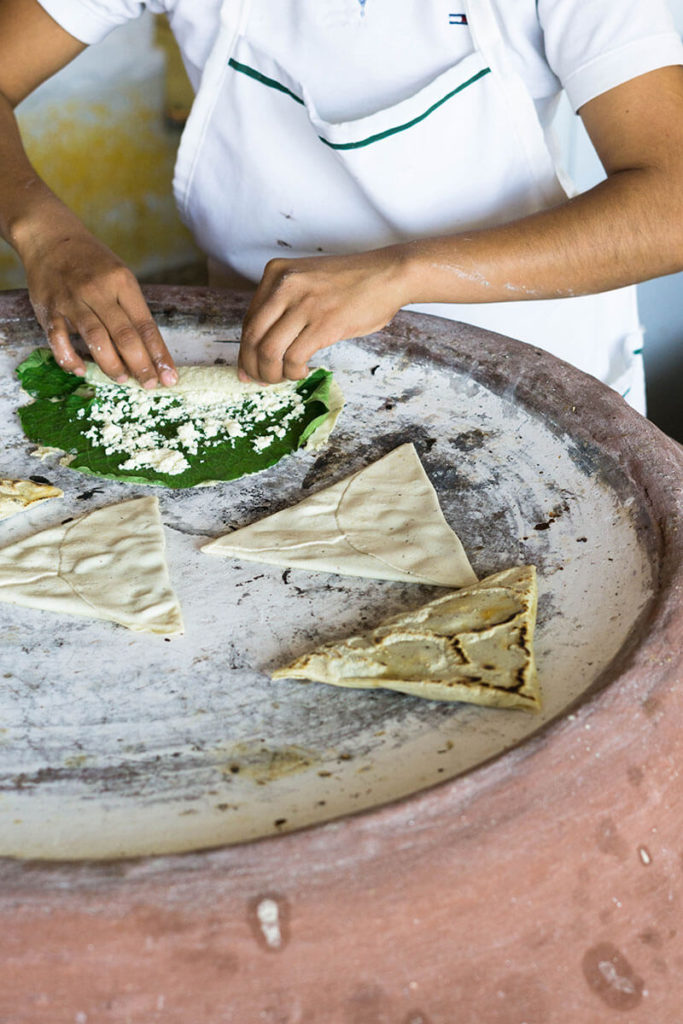
The main ingredient here is heirloom corn in many different varieties. Once the corn has gone through the nixtamal process and has been transformed into masa, lots of different dishes are made. The menu ranges from tetelas, which are triangular corn masa pockets that can be filled with various ingredients, such as fresh cheese and squash blossoms, to the traditional fried egg over a warm tortilla finished with a fresh acuyo leaf and a little red or green salsa.
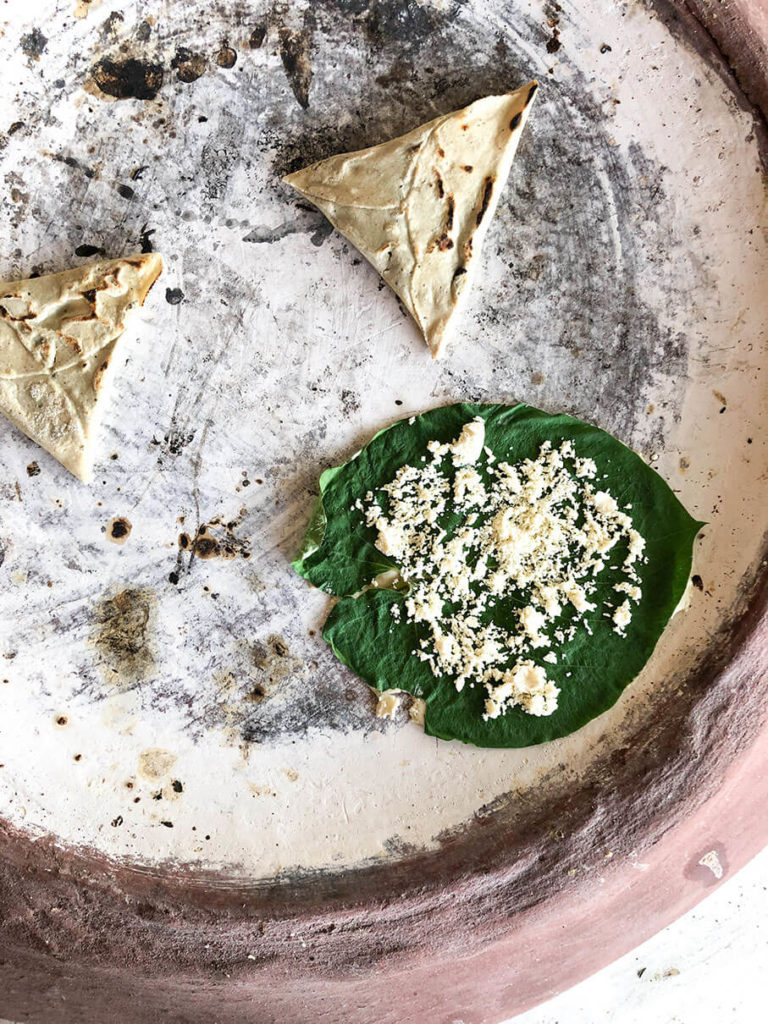
A century ago, there was a lot more heirloom corn on the Mexican market than there is today. A lot of different varieties of heirloom corn got contaminated with genetically modified corns. Itanoní has managed to maintain using a rainbow of heirloom varieties and is one of the few restaurants in Mexico that do so.
Itanoní Tortillería y Antojería, Av Belisario Domínguez 513, Reforma, Oaxaca
Mexican Grilled Steak Salad
Mexican Grilled Steak Salad
Ingredients
For the salad:
- 2 to 3 pounds flank steak
- 1 teaspoon kosher or coarse sea salt or more to taste
- To taste freshly ground black pepper
- 3 (about 1/2 pound) medium carrots peeled, halved lengthwise and sliced
- 3 (about 1 pound) medium red potatoes peeled and cubed
- 1/2 pound green beans ends trimmed, cut diagonally into thirds
- 1 cup peas fresh or thawed from frozen
- 6 radishes halved and cut into matchsticks
- 2 tablespoons cilantro leaves and upper part of stems chopped
- 1 ripe avocado halved, pitted, meat scooped out and sliced
- To taste pickled jalapeños
- To taste chipotle chiles in adobo sauce
For the vinaigrette: (If you like salad juicy double the vinaigrette!)
- 1/3 cup distilled white vinegar
- 1/3 cup olive oil plus more to grill the meat
- 1/3 cup vegetable oil
- 1 teaspoon kosher or coarse sea salt
- 1/2 teaspoon freshly ground black pepper
- 1/2 teaspoon brown sugar
- 1 clove garlic finely minced or pressed
- 2/3 cup red onion slivered
To serve:
- 1 head romaine lettuce leaves rinsed and chopped
- Warm corn tortillas for serving
Instructions
- Preheat the grill over medium-high heat. Brush the flank steak with olive oil and season with salt and pepper. Grill the meat for 5 to 6 minutes per side for medium (about 145 degrees Fahrenheit on a meat thermometer). Let rest for 5-10 minutes, then thinly slice against the grain and set aside.
- Bring salted water to a boil in a medium saucepan. Cook the carrots for about 3 to 4 minutes until tender, remove with a spider or slotted spoon and place in a bowl. Repeat with the potatoes and green beans, adding them to the same bowl with the carrots. Lastly, cook the peas for just one minute, then drain and place in the bowl with the other cooked vegetables.
- In a bowl, whisk the vinegar with the oils, salt, pepper, sugar and garlic, until emulsified. Add the onion and let macerate for at least 15 minutes. You may cover and place in the fridge for up to a couple weeks. Shake before using. If you like your salad very juicy and dressed, double the vinaigrette!
- Dress the lettuce with some of the vinaigrette and place on an extended platter. Pour some of the vinaigrette on to the cooked vegetables, incorporate the radishes and cilantro, mix well and place on lettuce. Place the sliced meat on top, add the avocado, dress with more of the vinaigrette. Add some of the pickled jalapeños and chipotles in adobo on the sides of the plate or to your liking. Serve with warm corn tortillas on the side.
Notes
Dulcería de Celaya
By Eduardo | @cazadordelomejor
Over 140 years ago, the Guizar family opened a small candy shop in the heart of Mexico City’s historic downtown. Dulcería de Celaya was located on Plateros Street, which is now Madero, a rarity in Mexico’s downtown core because it is only open to pedestrians. Today, the dulcería is located on Cinco de Mayo Street.
This dulcería is like a hidden jewelry store that sells some of the tastiest and most delicate candy in the city. The candies are showcased in hand-crafted wooden display windows and are handled like precious gems as you order.
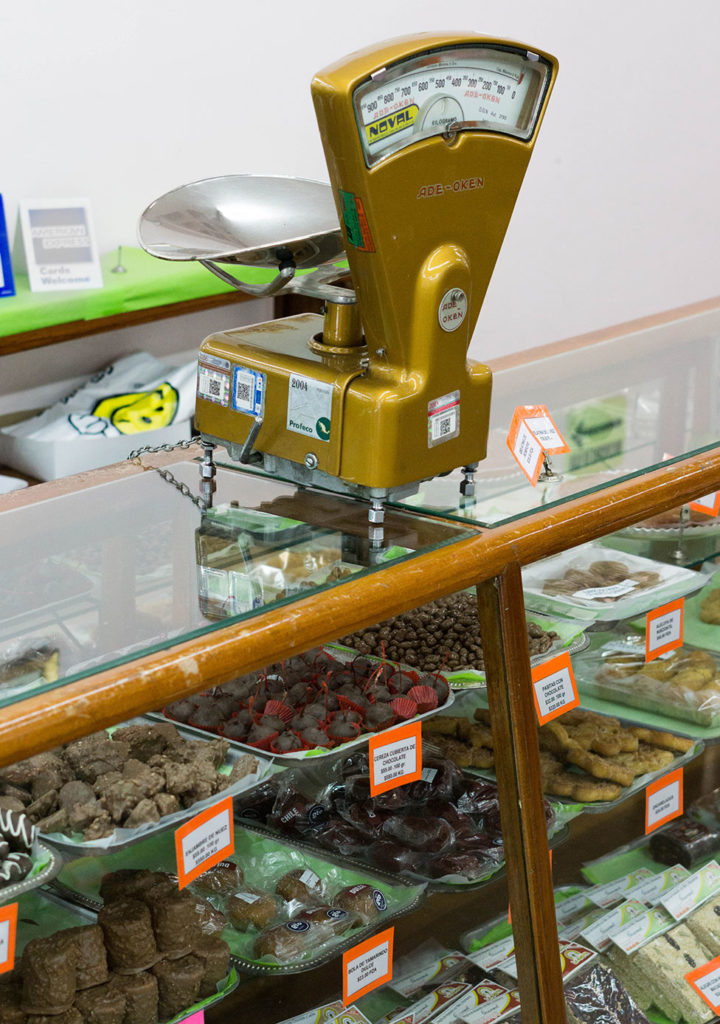
During the first few years of business, the different candies were sourced from various states across Mexico. After the shop’s reputation grew and gained popularity, the Guizar family decided to buy recipes from some of their most trusted suppliers and began also producing candy in the basement of the family home.
Strawberry, orange, guava, pineapple are all flavors you’ll taste, and the freshly grated coconut in their cocada dorada candy is a must. A few other, more traditional, Mexican flavors to try are marzipan and cajeta. As soon as you step foot in this tiny candy shop, you’ll find it hard to not walk out with a bag full of flavor.
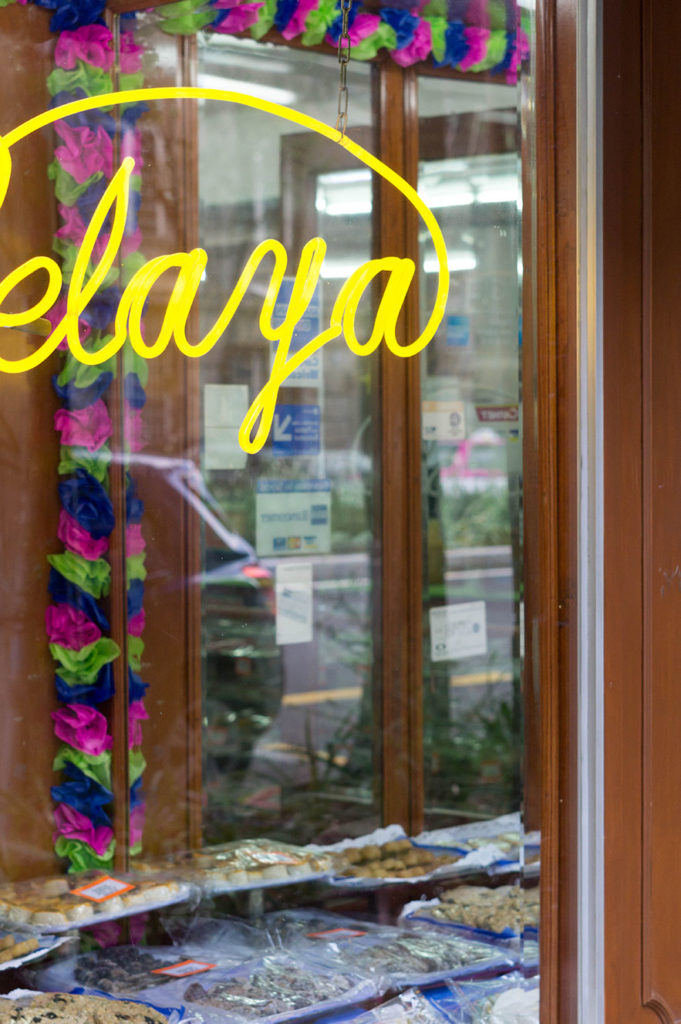
Dulcería de Celaya, Av. Cinco de Mayo 39, Centro Histórico, Cuauhtémoc, Ciudad de México
Pancracia
By Eduardo | @cazadordelomejor
Seven years ago, bread maker Hugo González opened up what is known to be one of the best bakeries in Mexico. As you walk along Chihuahua Street in Colonia Roma, a vibrant and historic neighborhood, the strong aroma of freshly baked bread will lure you over.
Hugo studied culinary arts at Universidad del Claustro de Sor Juana, a highly esteemed culinary school in the south of Mexico City and completed his thesis on bread fermentation. Soon after he was given the opportunity to stage at Ferran Adrià’s 3-Michelin star restaurant, El Bulli in Spain.
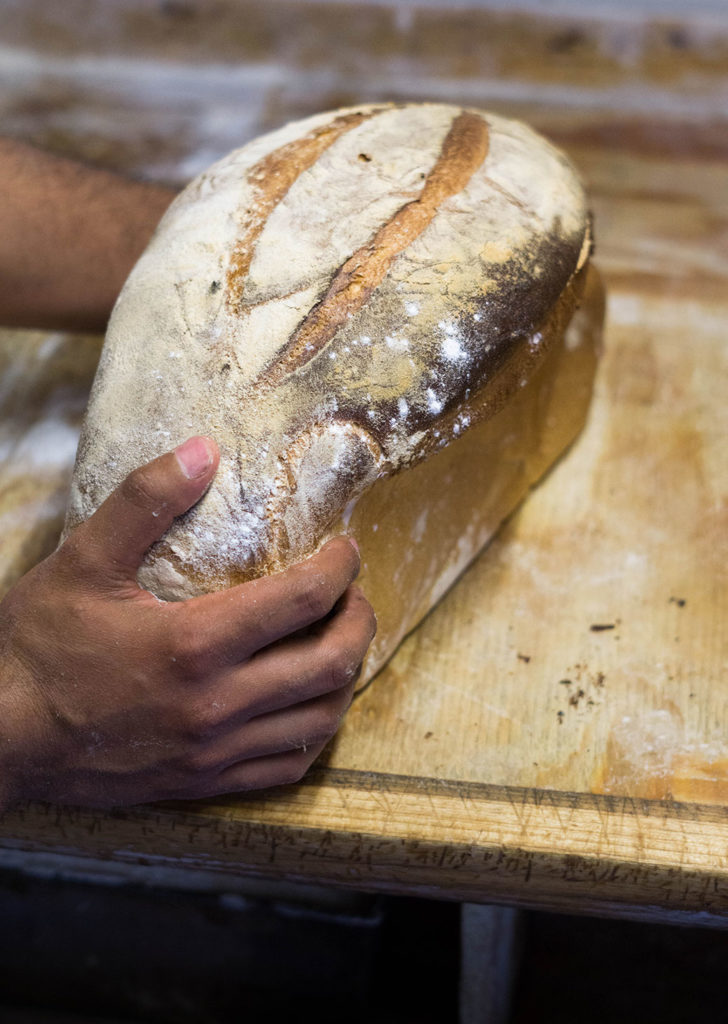
Everything at Pancracia is made with a sourdough starter that Hugo has been carefully nurturing for over 20 years. The thick & rustic crust and the soft & tangy crumb is a result of the fermentation-focused philosophy, different from classic bakeries in Mexico that stick to more traditional varieties using fresh yeast.
The bakery itself is a tiny ten by ten feet space divided into two different levels. On the first level is a large oven, racks of freshly baked bread and a small wooden working table. Up top is a fridge space where the rare sourdough starter is kept and shelving where dough is left to ferment. The temperature on the second floor is slightly higher and perfect to make the most of the fermentation process.
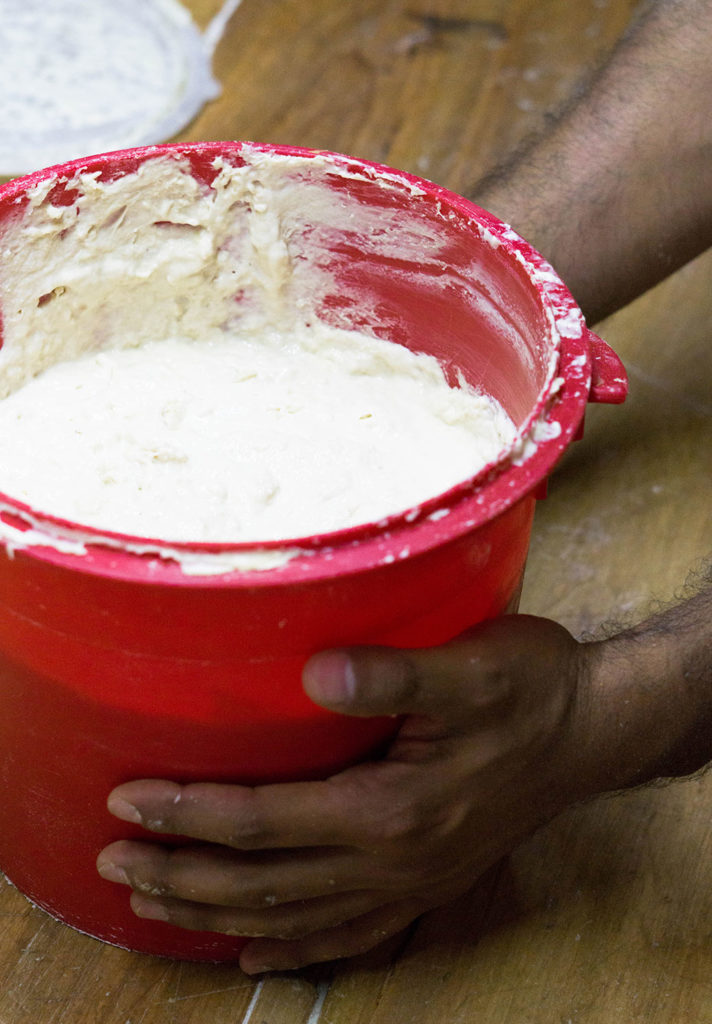
If you arrive early in the morning, you’ll be able to take home anything from doughy yogurt-based chocolate and vanilla conchas to savor through breakfast or fresh-out-of-the-oven fennel loaves to eat with dinner. Come late morning, some of Mexico City’s most renowned restaurants will be stopping by to pick up their artisanal orders.
One of my favorite things are the vigilantes: oval shaped butter-based sweet bread bathed in lemongrass honey – native to South America. Once you eat one, it’s hard to not eat a whole tray.
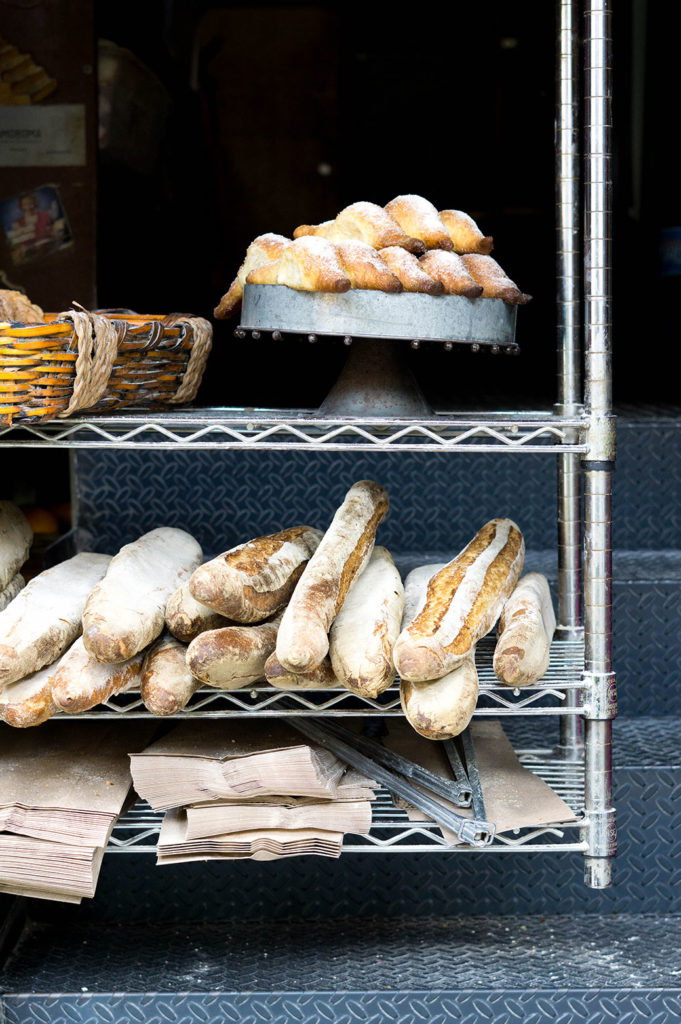
Over the years, Pancracia has made its mark on the neighborhood and has evolved into a strong reference for some of the best sourdough bread in the country.
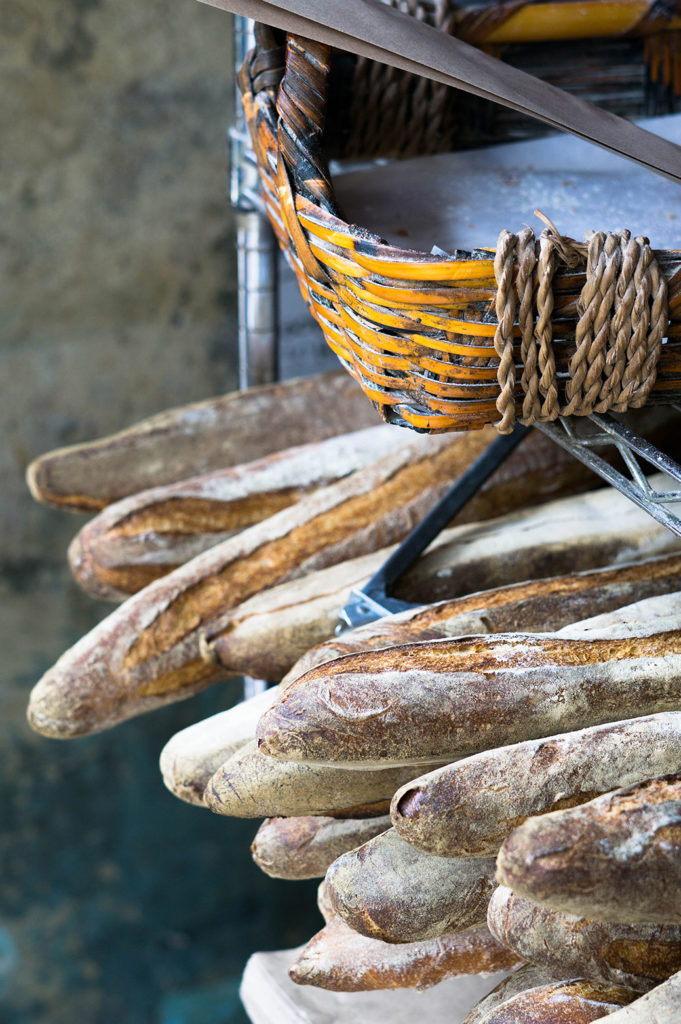
Pancracia, Chihuahua, 181, Roma Norte, Ciudad de México
Fonda Margarita
By Eduardo | @cazadordelomejor
If you’re a very early morning person who will eat lots during breakfast – Fonda Margarita is for you. If you’re not – you still need to go. It’s a true Mexico City breakfast experience. Lots of plate-licking involved.
Fondas are small, simple and unpretentious restaurants serving real, delicious inexpensive Mexican food. You feel as if your grandma was cooking some of her best dishes for you. Well, only if your grandma was Mexican, and had the best sazón.
My grandpa was the first person to introduce me to this 50-year-old fonda. I’m not super keen on waking up at 5:00 in the morning, yet will wake up without a problem just thinking that I’ll soon be wrapping a fresh tortilla around all the different guisados. They open at 5:30AM and that’s when everything is the freshest. This early in the morning you’ll be bound to encounter people who sneak in a quick breakfast before work and crazy people like myself who simply have a strong craving. Closing time depends on how fast all the food they have prepared for the day is eaten, which is usually around 11:00AM.
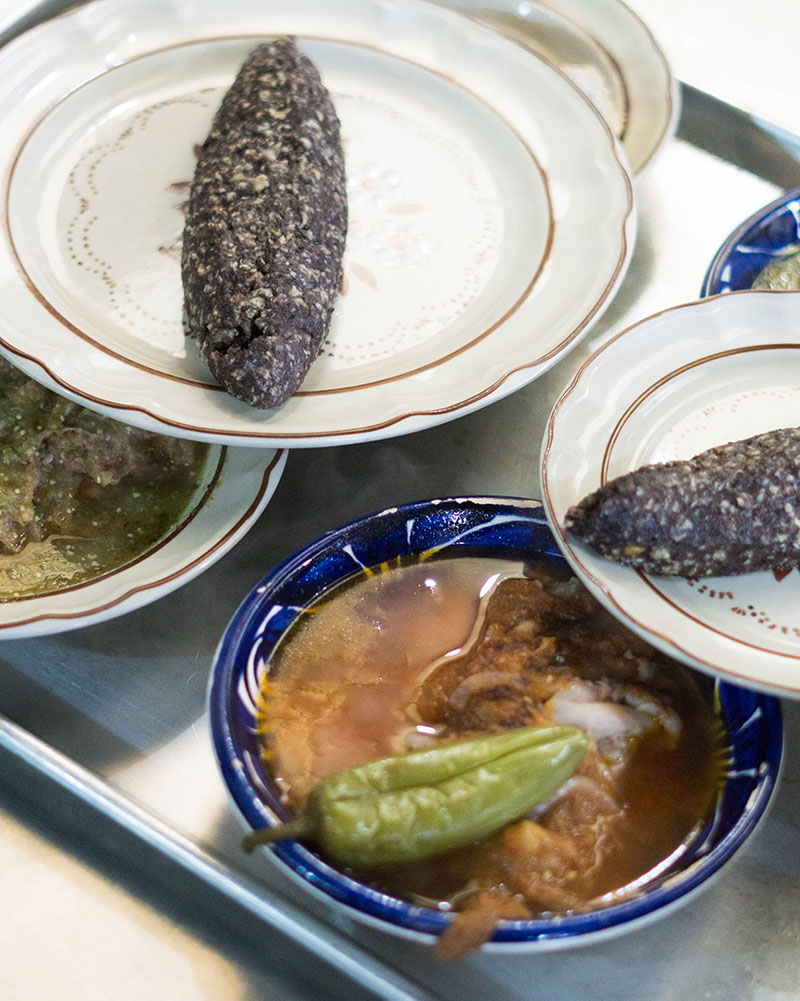
Long communal tables, an open kitchen, large casseroles, stacks of crispy churros, fast moving waiters and a live guitarist make up the feel of this place. Alberto Castillo, one of the three siblings who inherited the fonda from his hard-working mother will always be at the front of the kitchen, welcoming people as they walk in and making sure everything’s running smoothly.
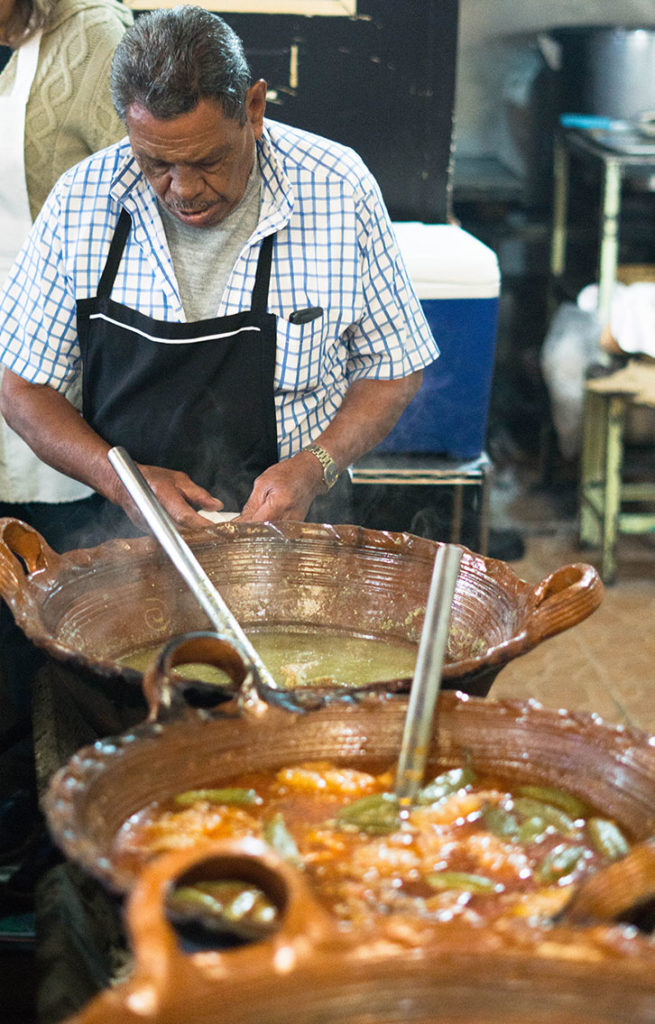
Like most fondas, there’s new and different menu items every day of the week. There’s also the traditional dishes they’ve been preparing for years. Frijoles negros con huevo (black beans scrambled with eggs), chicharrón en salsa verde (crispy pork skins in tangy green salsa), bistec en pasilla (thin steak in pasilla chile salsa) are just a few of the classics. The communal seating allows you to take a peek at what everyone else is eating. The best way to make the most of the experience is to go with friends, order a variety and wrap everything you eat with a warm tortilla. Finish off your breakfast with a hot, sugary churro dipped in a steaming café de olla.
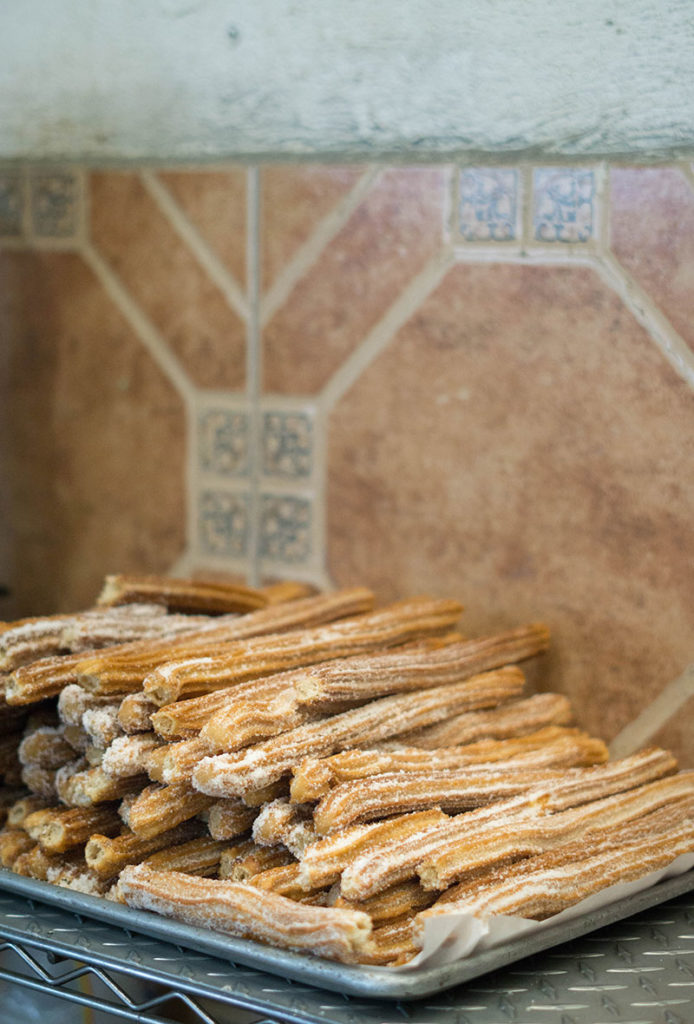
Thank you, abue Miki, for introducing me to one of my favorite breakfasts in Mexico City about 10 years ago, and to one of my close friends, Eduardo García, for the recent repeated visits.
Fonda Margarita, Adolfo Prieto 1364, Tlacoquemecatl del Valle, Ciudad de México
LALO!
By Eduardo | @cazadordelomejor
Now-a-days, pan francés (French toast) is commonly said in Mexico City’s culinary neighborhoods thanks to Chef Eduardo García, one of Mexico’s most creative and admired chefs, highly known for his product-focused philosophy.
Lalo (Eduardo’s nickname in Spanish) grew up as a migrant worker in the US, he gained valuable kitchen experience from Chef Eric Ripert in New York and was deported back to Mexico on several occasions. Upon his last deportation, Eduardo came across an opportunity to work with Enrique Olvera as Chef de Cuisine at Pujol restaurant in Mexico City. Today, Lalo and his wife Gabriela own and operate three of the best restaurants in Mexico: Maximo Bistrot Local, Havre 77 and LALO!
Three years ago, Garcia’s iconic pan francés was introduced at LALO! – the more casual concept of the group. The first glance, walking into the restaurant, is of bright and colorful walls covered with graffiti by Belgian artist Bue The Warrior and a long communal wooden table filled with locals and foreigners alike. You’ll be able to spot lots of orders of pan francés on the table.
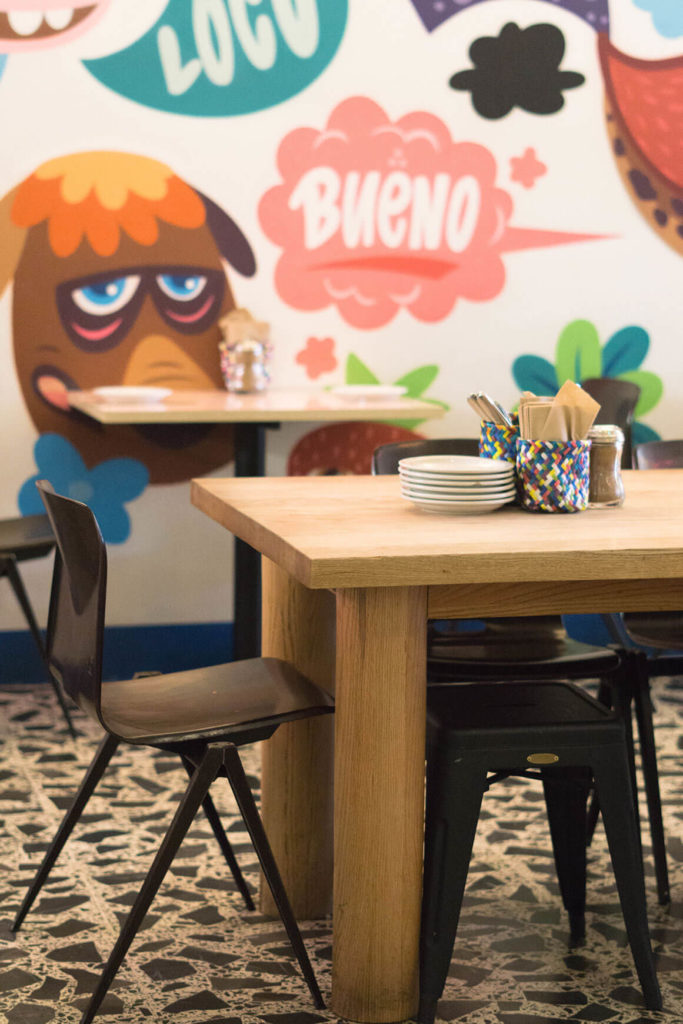
A lot of Mexicans, including myself, will line up for up to an hour on weekends just to have a bite and satisfy the craving. In fact, a lot of the restaurant’s hype and success is due to the large and thick slice of homemade brioche soaked in a vanilla-milk-egg-sugar mixture, fried in butter until crispy on the outside and topped with fresh whipped cream, mixed berries and blueberry compote. The most important component, what makes it so addictive, is the house-made brioche. Buttery, soft and moist, it took the team at LALO! time to perfect it.
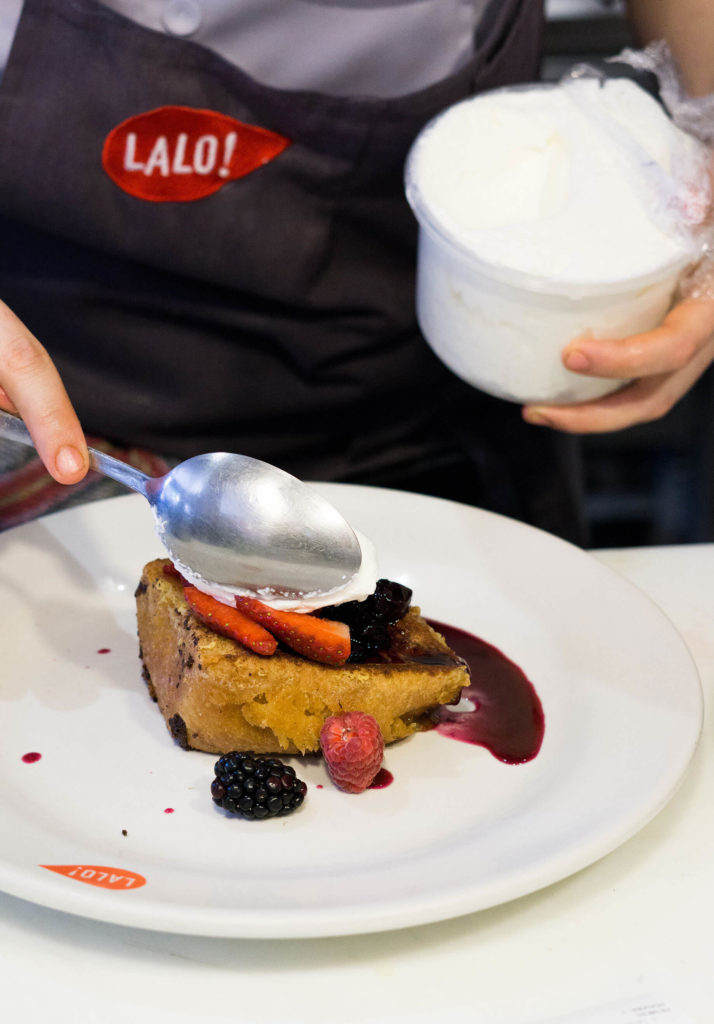
Despite all the mouth-watering breakfast options there are in Mexico, I make room for pan francés at least once a week. Usually on Sunday mornings, with a side of bacon and two fried eggs to accompany.
LALO!, Zacatecas 173, Roma Norte, Ciudad de México
Carne Asada and Cebollitas Pizza
Carne Asada and Cebollitas Pizza
Ingredients
- 1 chile de arbol stemmed
- 2 garlic cloves roughly chopped
- 2 tablespoons Worcestershire sauce
- 1/2 cup Maggi sauce or soy sauce
- 1/2 cup freshly squeezed lime juice
- 8 ounces flank steak or skirt steak
- 3 spring onions or 1 bunch scallions (5 to 6), trimmed to bite size pieces, including white and light green part of stems, plus more for garnish
- 8 ounces pizza dough
- All-purpose flour for dusting work surface
- 1/2 cup tomato pizza sauce
- 1 1/2 cups shredded mozzarella cheese divided
- 1/2 ripe Mexican avocado pitted, meat scooped out and sliced, for garnish
- cilantro leaves for garnish
- 1 lime cut into wedges, for garnish
Instructions
- To make the marinade, toast the chile on a small skillet over medium heat for less than a minute per side, until toasted but not burnt. In a blender or food processor, puree the chile with the garlic, Worcestershire sauce, Maggi sauce and lime juice. Divide marinade, reserving 1/4 cup for the onions and the rest for the steak.
- Place the steak in a zip-lock bag or shallow dish and pour all but 1/4 cup marinade over it to coat. Cover (if in a dish) and refrigerate for at least 2 hours and up to overnight, turning the meat once.
- Remove the steak from the marinade. Place in an oven-proof dish and broil for 3 minutes per side. Alternatively, you can grill it for the same amount of time over medium-high heat. You want to cook the meat to somewhere between rare and medium rare. Set aside to rest for 5 to 10 minutes, then slice and cut into 1 to 2-inch pieces, across the grain.
- Place the spring onions or scallions in a medium bowl with remaining 1/4 cup marinade.
- Preheat the oven to 425 degrees. On a lightly floured surface, stretch dough into a 10 to 12-inch circle and place on a pizza stone or in a cast-iron pan. Bake for 10 minutes. Remove from the oven and spead on 1/2 cup of the pizza sauce leaving a 1/2-inch border all the way around. Top with 3/4 cup mozzarella cheese, place the meat and onions (without their marinade) all over. Reserve the onion marinade for people to add as extra sauce once the pizza is done. Add the remaining mozzarella cheese. Transfer back to the oven and bake until cheese is melted and crust is crisp, about 12 to 14 more minutes.
- Transfer to a cutting board and serve the pizza topped with sliced avocado, cilantro leaves, sliced scallions and lime wedges. Drizzle on some reserved onion marinade, too.
Notes
Poblano, Corn and Zucchini Pizza
Poblano, Corn and Zucchini Pizza
Ingredients
- 1 poblano chile roasted, sweated, peeled and cut into 1 inch strips
- 1 small zucchini shaved into zucchini ribbons with a peeler or mandoline (about 1 1/4 cups)
- 1/3 cup corn kernels fresh or thawed from frozen
- 1/4 cup slivered red onion
- 2 tablespoons extra virgin olive oil
- 2 teaspoons freshly squeezed lime juice
- 1/4 teaspoon chipotle or ancho chile powder
- 1/4 teaspoon kosher or coarse sea salt or to taste
- All-purpose flour for dusting work surface
- 1/2 pound pizza dough
- 1/2 cup tomato pizza sauce
- 1 1/2 cups shredded mozzarella cheese divided
- 1/4 cup fresh ricotta cheese or requesón
- 2 tablespoons roughly chopped Italian flat-leaf parsley for garnish
Instructions
- Preheat oven to 425 degrees.
- In a medium bowl, toss to combine the poblano chile strips, zucchini ribbons, corn, red onion, olive oil, lime juice, chile powder and salt.
- On a lightly floured surface, stretch the dough into a 10 to 12-inch circle and place on a pizza stone or in a cast-iron pan. Bake for 10 minutes. Remove from the oven and spread on 1/2 cup pizza sauce, leaving a 1/2-inch border all the way around. Top with 3/4 cup mozzarella cheese, then using a slotted spoon to leave the juices in the bowl, spoon on the poblano, zucchini and corn mixture. Add the remaining mozzarella cheese, and then place about 8 mounds, about a heaping teaspoon each, of ricotta cheese on top. Transfer back to the oven and bake until the cheese is melted and the crust is crisp, about 12 to 14 more minutes.
- Transfer to a cutting board, sprinkle with chopped parsley if desired, and serve.
Notes
Chicken in Green Salsa Tamales
Chicken in Green Salsa Tamales
Ingredients
For the tamal dough or masa:
- 3/4 cup lard, vegetable shortening, or seasoned oil (see note at end of recipe)
- 1/2 teaspoon kosher or coarse sea salt or to taste
- 1 teaspoon cold water
- 1 teaspoon baking powder
- 1 pound (about 3 1/4 cups) instant corn masa flour (masa harina) for tortillas or tamales
- 3 1/2 cups homemade chicken broth add more if needed
For the filling:
- 1 batch salsa verde
- 2 cups shredded cooked chicken from homemade chicken broth
To assemble the tamales:
- 25 dried corn husks soaking in hot water
Instructions
To make the tamal dough or masa:
- Place lard, vegetable shortening or seasoned oil in an electric mixer and beat until very light, about 1 minute. Add salt and 1 teaspoon of cold water and continue beating until it is white and spongy, a couple more minutes. Add the baking powder and then alternate adding the instant corn masa and the chicken broth a little at a time. Continue beating until dough is homogeneous and as fluffy as can get. You know the tamal masa is ready when you can drop 1/2 teaspoon of the masa in a cup of cold water and it floats.
To make the filling:
- Combine the salsa verde with the cooked shredded chicken.
To assemble the tamales:
- Soak the dried corn husks in hot water for a couple minutes, or until they are pliable, and drain. Lay out a corn husk with the tapering end towards you. Spread about 3 tablespoons of masa into about a 2 to 3-inch square, the layer should be about 1/4-inch thick, leaving a border of at least 1/2-inch on the sides. Place 1 tablespoon of filling in the middle of the masa square.
- Pick up the two long sides of the corn husk and bring them together (you will see how the masa starts to swaddle the filling) and fold the folded sides to one side, rolling them in same direction around tamal. Fold up the empty section of the husk, with the tapering end, from the bottom up. This will form a closed bottom and the top will be left open.
- Assemble all the tamales and place them as vertically as you can in a container.
To prepare the tamalera or steamer:
- Place water in the bottom pan of a steamer (so that water is under the steamer) and bring it to a simmer. Line the steamer with one or two layers of soaked corn husks.
To cook the tamales:
- When you have all tamales ready, place them, again as vertically as you can, into the prepared steamer with the open end on top. If there is space left in the steamer, tuck in some corn husks, so the tamales won’t dance around. Cover with more corn husks, and steam covered with a lid for 50 minutes to an hour. You know the tamales are ready when they come easily free from the husks. They will still be moist, and as they are released from the husks, you will see the moisture, like when you remove good moist muffins from their paper baking cups.
- Finished tamales will stay warm for about 2 hours in the steamer. They can be made ahead several days before and stored in refrigerator, well wrapped. They can also be frozen for months. In either case, reheat in a steamer. For refrigerated tamales, it will take about 20 minutes and about 45 minutes for frozen tamales.
- Note: To make seasoned oil, in a medium saucepan, heat 1 cup vegetable oil over medium heat, add a thick slice of onion and 4 garlic cloves. Cook for 15 minutes until completely browned. Remove onion and garlic before using the oil.
Notes
Mexican Chicken Broth
Mexican Chicken Broth
Ingredients
- 1 3-pound chicken cut into serving pieces, or 2–3 pounds mixed chicken parts
- 3 carrots peeled and cut into large chunks
- 1 white onion halved
- 3 celery stalks cut into large chunks
- 1 clove garlic
- 5 to 6 black peppercorns
- 5 to 6 fresh Italian parsley sprigs
- 1 to 2 teaspoons dried marjoram
- 1 to 2 teaspoons dried thyme
- 2 bay leaves
- 1 tablespoon kosher or coarse sea salt or to taste
- 3 1/2 quarts water
Instructions
- Place all the ingredients in a large pot and bring to a boil. Reduce the heat to medium-low, skim off any foam, and simmer, partially covered, for 50 minutes. Turn off the heat and let cool.
- With a slotted spoon, transfer the chicken pieces to a bowl. Strain the broth into a container, cool, and refrigerate. Remove the skin and bones from the chicken. Shred or cut the meat into chunks for future use and refrigerate if not using right away.
Notes
Salsa Verde
Salsa Verde
Ingredients
- 2 pounds green tomatillos husks removed and rinsed
- 2 cloves garlic
- 2 serrano or jalapeño chiles or more to taste
- 1 cup cilantro leaves and upper stems
- 1/4 cup roughly chopped white onion
- 1 teaspoon kosher or coarse sea salt or to taste
- 2 tablespoons safflower or corn oil
Instructions
- Place the tomatillos along with the garlic cloves and chiles in a pot and add enough water to cover. Place over high heat and bring to a boil. Reduce heat to medium and simmer for about 10 minutes, or until the tomatillos change in color from bright green to a pale green, are cooked through, and are soft but are not coming apart.
- Transfer the tomatillos, garlic, chile (you may want add only 1 chile at first), and 1/2 cup of the cooking liquid to a blender and puree until smooth. Incorporate the cilantro leaves, onion and salt and process again. Taste for salt and add more if need be. Also taste for heat, you may add the other chile in pieces until you reach your desired heat level.
- In a medium saucepan, set over medium heat, pour the oil. Once hot, pour in the salsa verde, bring to a simmer and cook for 6 to 8 minutes until it thickens a bit and deepens its flavor and color. Turn off the heat.
- Allow to cool to room temperature and serve. Or, once it cools down, you may store it in a closed container in the refrigerator for weeks.
Tortas Atlixco
By Eduardo | @cazadordelomejor
In Mexico, there are infinite possibilities between two slices of bread. Mexicans are very creative. We’ve come up with all sorts of combinations. From a simple telera filled with mayo, beans, ham, quesillo and rajas to a more complex torta, which involves grabbing a whole different dish, such as tamales or chilaquiles, and incorporating them into the torta.
The torta is part of Mexican culture. It’s difficult for a Mexican to go through a day without saying, thinking about or eating one. On the way to work, I will probably pass by ten different torta shops. My office is four blocks from home. Whenever I walk by construction sites in the city during lunch hours, it’s hard for me not to notice the construction workers making tortas with soft teleras, freshly sliced ham and canned rajas and beans. My mouth immediately starts to water.
Most vendors that sell tortas in Mexico stick to one type, and they work hard to perfect it. Each torta maker has their own trick to making them better than the rest. Whether it’s getting rid of the migajón, brushing butter on each slice of bread, using a certain brand of mayonnaise or sourcing ingredients from their hometown. They’re convinced it makes the difference, and they’re right. For many it may seem simple to make a torta, but it’s the care and dedication of each ingredient that makes the difference.
My most recent torta experience was at Tortas Atlixco. The small, yet revamped, hole in the wall torta shop opened up in December 2016 and is owned by Arturo Ibarra, a Mexican torta aficionado, Sofía Aguilar, the owner of a creative branding firm in Mexico City and New York, and Juan Ángel Cordova, a Mexican entrepreneur. Arturo lived off tortas in Spain for years and has tried and experimented with all sorts of tortas. He’s managed to sophisticate the traditional Mexican torta at his tiny six seat shop.
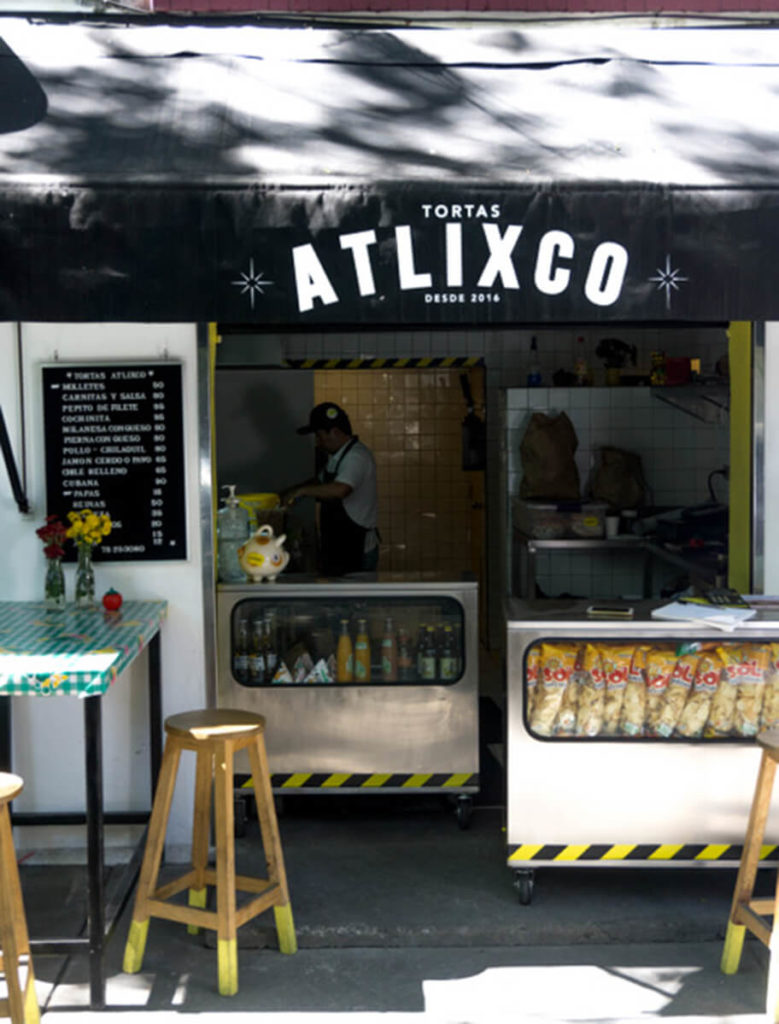
To start off, the team at Tortas Atlixco has gone as far as to reach out to one of Mexico’s most recognized chefs, Elena Reygadas, to create a special, rustic and thick-crust sourdough bread exclusively for their use, as opposed to a traditional soft and airy bolillo or telera. If you’re familiar with the food scene in Mexico City, you’ll know that Elena is one of the most esteemed bread makers there is in the country and dedicates a lot of her time to perfecting the fermentation process of her creations. She was awarded Latin America’s Best Female Chef in 2014 by San Pellegrino and her main restaurant, Rosetta, is on the San Pellegrino list of Latin America’s 50 Best Restaurants year after year.
The menu at Tortas Atlixco ranges from milanesa to chilaquiles tortas. Each is unique and the ingredients sourced will not travel more than ten blocks to arrive at Arturo’s kitchen. I quickly chose the chilaquiles torta off the menu. Each bite was memorable. The green tomatillo sauce was spicy and perfectly seasoned, the fried tortilla strips were crunchy, the breaded chicken was moist and the fresh cream, quesillo and thinly sliced red onion gave the torta a lot of flavor. Indeed, Elena’s sourdough is what brings everything together and is what makes Tortas Atlixco unique. Arturo has succeeded at maintaining the torta tradition, while improving only certain components he considers necessary to create a revolutionary torta.
Tortas Atlixco, Calle Atlixco 155, Condesa, Mexico City
Crab Cakes with Jalapeño Aioli
Crab Cakes with Jalapeño Aioli
Ingredients
For the crab cakes:
- 1 jalapeño or serrano chile seeded and finely chopped, or to taste
- 2 teaspoons freshly squeezed lime juice
- 2 teaspoons chopped fresh cilantro leaves and upper part of stems
- 3 tablespoons breadcrumbs
- 1 large egg
- 2 teaspoons mayonnaise
- 1/2 teaspoon kosher or coarse sea salt or to taste
- 1/4 teaspoon freshly ground black pepper or to taste
- 1 pound jumbo lump crab meat cartilage removed and meat broken into smaller pieces with your hands
- 1 tablespoon butter
- 1 tablespoon olive oil
For the jalapeño aioli:
- 1 jalapeño or serrano chile seeded optional, or to taste
- 1 tablespoon freshly squeezed lime juice
- 1 cup mayonnaise store bought or homemade
- 1/4 cup cilantro leaves
- 1/4 teaspoon kosher or coarse sea salt or to taste
- freshly ground black pepper to taste
For garnish:
- 2 cups watercress
- 1 tablespoon freshly squeezed lime juice
- 2 tablespoons olive oil
- kosher or coarse sea salt to taste
- freshly ground black pepper to taste
Instructions
To make the crab cakes:
- In a mixing bowl, combine the jalapeño, lime juice, cilantro, breadcrumbs, egg, mayonnaise, salt and pepper, and mix well. Gently fold in the crab meat until blended and the mixture holds together. Using your hands, shape into six 3-inch cakes, about 1-inch thick and somewhat flattened on the top and bottom.
- Set a large 12-inch skillet over medium-high heat and add the butter and oil. When the butter begins to foam, add as many crab cakes as will fit without crowding. Cook 2 to 3 minutes per side. The outside should be lightly browned and the inside cooked, but moist and firm when pressed with a finger. Remove the crab cakes from the pan.
To make the jalapeño aioli:
- Place the jalapeño, lime juice, mayonnaise, cilantro, salt and pepper in a blender or food processor and puree until smooth.
To garnish:
- In a medium bowl, mix the watercress with the lime juice and olive oil. Season with salt and pepper and toss.
Notes
Chicken in Salsa Verde Tamales Casserole
Chicken in Salsa Verde Tamales Casserole
Ingredients
- Vegetable oil to grease the baking dish
- 1 batch corn dough or masa from my tamal recipe
- 1 batch salsa verde
- 2 cups shredded cooked chicken
- 1 1/2 cups Mexican crema or Latin-style cream, crème fraiche or sour cream
- 2 1/2 cups (about 10 ounces) grated Oaxaca cheese mozzarella or Monterey Jack
Instructions
- Preheat oven to 400 degrees Fahrenheit.
- Grease a large baking dish with oil. Spread half of the tamal dough or masa in a single layer over the bottom of the baking dish. Set aside 3/4 cup of salsa verde and combine the rest with the shredded chicken. Spread the chicken and salsa verde mix on top of the masa. Cover with the rest of the masa in a second layer. Cover with aluminum foil and place in the oven for an hour.
- Remove from the oven. Carefully remove the aluminum foil and spread on the remaining 3/4 cup of salsa verde. Top with the cream and cheese. Place back in the oven, uncovered, for 10 more minutes, or until the cheese completely melts and begins to brown along the edges. Serve hot, cut into squares.
Notes
Chef Rod’s Chorizo Burger
Chef Rod’s Chorizo Burger
Ingredients
For the burger:
- 1 1/4 pounds ground beef
- 3/4 pounds Mexican chorizo
- 1/2 onion chopped
- 1/4 tablespoon black pepper
- 1/4 tablespoon kosher salt
- 1/4 teaspoon cumin
- 2 cloves of garlic whole and peeled
- 1/4 cup water
To Serve:
- 5 slices bacon cooked
- 5 slices pepper jack cheese
- Tomato slices to garnish
- Red onion slices to garnish
- Green leaf lettuce to garnish
- Hamburger buns
For the Chipotle Mayo:
- 1 chipotle pepper from chipotle chiles in adobo sauce
- 1 cup of heavy mayonnaise
Instructions
To make the burger:
- Pre-heat the oven to 350 degrees Fahrenheit.
- In a large mixing bowl, combine the ground beef and the chorizo.
- In a blender, add the onions, black pepper, salt, cumin, and garlic and mix at medium speed adding water. Pour the blender mixture into the beef mixture, mix well, and form into burger patties by hand.
- Cook burger on a skillet, grill pan, or grill to desired temperature. Butter the buns and heat in the oven for 5 minutes.
To make the chipotle mayo:
- Using a blender, mix the mayonnaise and chipotle pepper on low speed.
- Spread chipotle mayo on both halves of the buns.
To assemble burger:
- To assemble burger, start with the base of the bun and layer on the lettuce, a slice of tomato, sliced onions, the cooked burger patty, pepper jack cheese, cooked bacon, and the top of half of the bun.
Notes
Mexico City
Mexico’s independent capital city and one of Latin America’s great culinary capitals
An autonomous city not tied to any state, Mexico City is Mexico’s capital and largest city. It is also the oldest capital city and most populous city in all of North America. One of Latin America’s great culinary capitals, it can trace its culinary roots all the way back to the Aztecs, whose capital is now the site of the city’s Centro Histórico. The traditional cooking still revolves around the Aztec staples like maíz and beans blended with ingredients introduced by Spanish settlers such as meat and dairy. A multicultural metropolis, Mexico City’s cuisine has also embraced contributions from waves of immigrants from the Middle East, Asia, Africa, and Europe.
Dive into Mexico City Content →
Mexican Hot Dogs
Episode 301: Born in the Kitchen
Pati travels to Mexico City to reconnect with her father and help him cook one of her favorite childhood meals: Huevos a la Mexicana. Back in her own kitchen, she’ll use that visit as inspiration to cook a few dishes that she remembers fondly from childhood, and then pass on the tradition by cooking dessert with her youngest son Juju.

